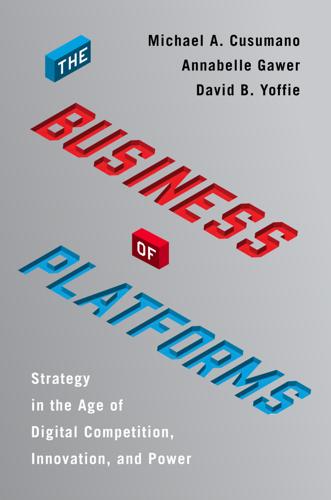
The Business of Platforms: Strategy in the Age of Digital Competition, Innovation, and Power
by
Michael A. Cusumano
,
Annabelle Gawer
and
David B. Yoffie
Published 6 May 2019
Tencent as well as third-party firms use WeChat APIs to build a wide variety of apps, offering services such as electronic payments as well as video games and ride sharing. (Tencent, as well as Alibaba, are investors in Didi Chuxing, which acquired Uber’s Chinese ride-sharing operations.) Tencent also closely integrated WeChat with its game development and hosting platform. In terms of the business model, WeChat makes money by investing the cash that users deposit in their electronic payment accounts.39 It also earns fees from video games and sending customers to its partners such as Didi Chuxing and JD.com, a major Chinese online shopping platform in which Tencent invested in 2014. Key Takeaways for Managers and Entrepreneurs In this chapter, we discussed the differences between innovation and transaction platforms and how they followed the same steps in building their platforms: Identify platform market sides, solve the chicken-or-egg problem to launch and generate network effects, find a workable business model, and establish governance rules to determine who is allowed to do what through the platform.
…
Ironically, this new technology may replace some of the most widely used platforms in the world: Uber, Lyft, Didi Chuxing, and other ride-sharing businesses. Despite the strong cross-side network effects, the ride-sharing platform revolution could actually disappear. The business challenge for ride-sharing platforms is simple: They tend to lose money, and lots of it. The cost of attracting and paying drivers as well as keeping ride prices low has squeezed profit margins. In addition, many drivers multi-home (serve both Uber and Lyft, or conventional taxi companies). Therefore, Uber, Lyft, Didi Chuxing, and other ride-sharing companies have announced that their long-term strategy is to move away from being a pure platform, matching riders with drivers, toward a model of “transportation as a service,” in which they own or lease all their own vehicles, including both automobiles and bicycles or scooters.
…
Together, these seven companies at their peak represented close to $5 trillion in market value. Moreover, in a recent list of more than two hundred current and former “unicorns”—start-ups with valuations of $1 billion or more—we estimated that platforms made up between 60 and 70 percent. These were led by firms such as Ant Financial (owned by Alibaba), Uber, Didi Chuxing, Xiaomi, Airbnb, and other well-known private companies (several of which planned to go public in the near future).10 So, yes, Mr. Zuckerberg (and Mr. Gates)—how did we get to this point? How have a small number of companies come to exert such enormous influence over our personal, professional, and even political lives, as well as the world economy?
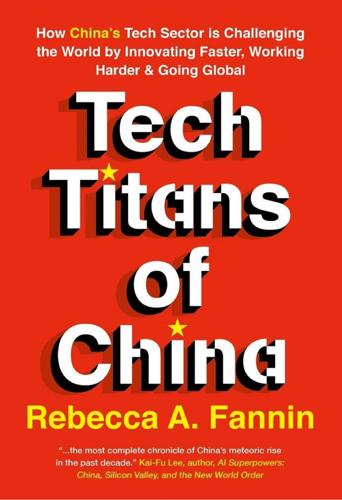
Tech Titans of China: How China's Tech Sector Is Challenging the World by Innovating Faster, Working Harder, and Going Global
by
Rebecca Fannin
Published 2 Sep 2019
Fannin, based on Didi headquarters visit in Beijing, November 2, 2018. 4. “China’s Mobility Industry Picks Up Speed,” Bain & Co., May 2018; bain.com/insights/chinas-mobility-industry-picks-up-speed/. 5. Jake Spring, Tatiana Bautzer, and Gram Slattery, “China’s Didi Chuxing Buys Control of Brazil’s 99 Ride-Hailing App,” Reuters, January 3, 2018; reuters.com/article/us-99-m-a-didi/chinas-didi-chuxing-buys-control-of-brazils-99-ride-hailing-app-idUSKBN1ES0SJ. 6. Lulu Yilun Chen, “Beleaguered Didi,” Bloomberg, September 7, 2018; bloomberg.com/news/articles/2018-09-07/beleaguered-didi-is-said-to-lose-585-million-in-just-six-months.
…
Over the past decade, China’s great tech leap forward has been supercharged by an abundance of venture capital often sourced from Western pension funds, endowments, family offices, and foundations. Records keep getting set for funding sizes, IPOs, deals, and investment performance (see chapter five, page 127). China’s ride-hailing leader, Didi Chuxing, has pulled in $21 billion in funding since starting in 2012, and even took over rival Uber in China in 2016 in a groundbreaking $35 billion transaction.34 Several Chinese tech unicorns have scored blockbuster IPOs: Chinese smartphone maker Xiaomi nabbed a market capitalization of $54 billion and food services app Meituan attracted $53 billion, while shopping app Pinduoduo took only three years to go from zero to a $24 billion IPO in New York.
…
The T is for AI-powered news aggregator Toutiao (pronounced two ti ow) and video app TikTok. The M is for food delivery and services app Meituan Dianping or the shortened Meituan (pronounced may tia qan), which was launched by the greatest cloner of China internet time, Wang Xing, who cloned Facebook, Twitter, Friendster, and Groupon. The D is for ride-sharing service Didi Chuxing, or simply “dee dee,” which absorbed Uber. I’ve added an X for Xiaomi (pronounced shao me), the world’s fourth largest smartphone maker, from serial entrepreneur Lei Jun, who worships the legendary Steve Jobs. Alibaba and Tencent at the head of the pack, plus Baidu not far behind, remain the epicenter of China tech—so far.
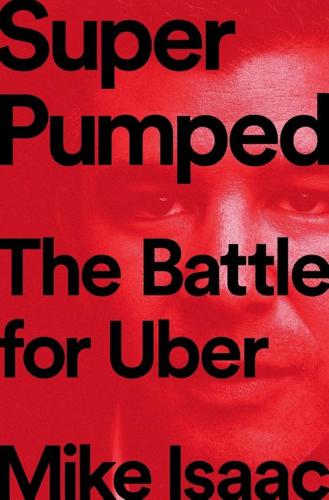
Super Pumped: The Battle for Uber
by
Mike Isaac
Published 2 Sep 2019
The only thing that worried Kalanick more than China’s Big Brother–esque government was another “brother,” this one a startup: Didi Chuxing. Roughly translated, it meant “Brother Travel.” Colloquially, it was “honk honk taxi”: “DiDi” mimicked the sound of a car’s horn in Chinese. While the name sounded playful, the company and its leadership were anything but. Didi Chuxing was the preeminent ride-hailing startup in China, built on years of analysis of how China’s billion-plus citizens travel the country’s congested streets. Cheng Wei, Didi Chuxing’s CEO, was in his late twenties when he started the company, having only held a handful of jobs in sales prior.
…
His bet on building a taxi-hailing business in 2012 ballooned into a multi-billion-dollar ride-hailing giant in just three years, backed by heavy-hitting venture investments from Tencent and Alibaba, two of China’s biggest and most popular technology companies. Didi Chuxing had everything Uber needed to succeed: scale, recognition, and, most of all, support from the government. It also had incredibly deep pockets, having raised billions in capital from Chinese investors over just a few years of operation. The top brass there had mettle, too. Before becoming Didi Chuxing, Didi Dache had been locked in a spending war with a major competitor, Kuaidi Dache. In 2015, the two companies came to a truce and merged, but not before burning millions of Yuan worth of free rides offered to users.
…
President Trump,” New York Times, July 17, 2018, https://www.nytimes.com/2018/07/17/technology/political-ads-facebook-trump.html. 200 “Facebook enabled a Trump victory”: Max Read, “Donald Trump Won Because of Facebook,” Intelligencer, November 9, 2016, http://nymag.com/intelligencer/2016/11/donald-trump-won-because-of-facebook.html. 200 Even inside of Facebook: Mike Isaac, “Facebook, in Cross Hairs After Election, Is Said to Question Its Influence,” New York Times, November 12, 2016, https://www.nytimes.com/2016/11/14/technology/facebook-is-said-to-question-its-influence-in-election.html. 200 Trump had banked more: Nicholas Confessore and Karen Yourish, “$2 Billion Worth of Free Media for Donald Trump,” New York Times, March 15, 2016, https://www.nytimes.com/2016/03/16/upshot/measuring-donald-trumps-mammoth-advantage-in-free-media.html. 201 “a huge step backward”: Biz Carson, “ ‘I Do Not Accept Him As My Leader’—Uber CTO’s Explosive Anti-Trump Email Reveals Growing Internal Tensions,” Business Insider, January 24, 2017, https://www.businessinsider.com/uber-cto-internal-email-donald-trump-deplorable-2017-1. 202 Uber’s $3.5-billion funding round: Isaac and de la Merced, “Uber Turns to Saudi Arabia for $3.5 Billion Cash Infusion.” 202 Some of Uber’s institutional shareholders: Alex Barinka, Eric Newcomer, and Lulu Yilun Chen, “Uber Backers Said to Push for Didi Truce in Costly China War,” Bloomberg, July 20, 2016, https://www.bloomberg.com/news/articles/2016-07-20/uber-investors-said-to-push-for-didi-truce-in-costly-china-fight. 202 Uber conceded the fight: Paul Mozur and Mike Isaac, “Uber to Sell to Rival Didi Chuxing and Create New Business in China,” New York Times, August 1, 2016, https://www.nytimes.com/2016/08/02/business/dealbook/china-uber-didi-chuxing.html. 202 For investors, it was a win: https://www.bloomberg.com/news/articles/2016-07-20/uber-investors-said-to-push-for-didi-truce-in-costly-china-fight. 203 top tech CEOs were called: David Streitfeld, “ ‘I’m Here to Help,’ Trump Tells Tech Executives at Meeting,” New York Times, December 14, 2016, https://www.nytimes.com/2016/12/14/technology/trump-tech-summit.html?

Blitzscaling: The Lightning-Fast Path to Building Massively Valuable Companies
by
Reid Hoffman
and
Chris Yeh
Published 14 Apr 2018
Technology innovation is a key factor in retaining the gains produced by business model innovation. After all, if one technology innovation can create a new market, another technology innovation can render it obsolete, seemingly overnight. While Uber has achieved massive scale, the greatest threat to its future doesn’t come in the form of direct competitors like Didi Chuxing, though these are formidable threats. The greatest threat to Uber’s business is the technology innovation of autonomous vehicles, which could make obsolete one of Uber’s biggest competitive advantages—its carefully cultivated network of drivers—essentially overnight. The key is to combine new technologies with effective distribution to potential customers, a scalable and high-margin revenue model, and an approach that allows you to serve those customers given your probable resource constraints.
…
Lau was able to bring much-needed organizational best practices to Tencent, such as revenue goals and long-term plans. “This was a discipline that was urgently needed for a young company growing extremely fast,” said Hans Tung, a partner at the venture capital firm GGV Capital, who coinvested with Tencent in Didi Chuxing. Another helpful strategy for hiring outside executives is to be strategic about how you blend those outside hires with inside promotions. Mariam Naficy of the online art and graphic design marketplace Minted realized that she could combine the strengths of both groups to create a more effective management team.
…
At this phase, you should try to make your opponents defend every bit of their territories, because, if you succeed, they will be stretched too thin to ward off the attacks you actually consider important. Just remember to save a few ships to fend off attacks from those pesky pirates! From Captain to Admiral At the time of the writing of this book, the ridesharing company Uber was Silicon Valley’s most valuable start-up (and second globally to its frenemy, China’s Didi Chuxing), despite having spent most of 2017 in the news for a number of serious problems and scandals. Some of these issues were due to clearly unethical behavior, including internal problems, such as the sexual harassment reported by the former Uber engineer Susan Fowler, and various external attempts to subvert free competition, regulation, and the press, such as creating fake accounts to poach drivers from its rival Lyft (as reported by The Verge), developing software (Greyball) to prevent law enforcement and regulators from accessing the service, and then-COO Emil Michael suggesting that the company spend money to hire opposition researchers to intimidate journalists.
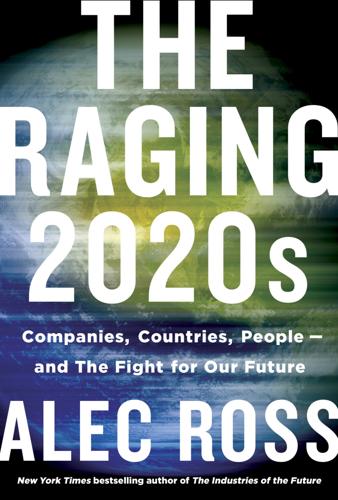
The Raging 2020s: Companies, Countries, People - and the Fight for Our Future
by
Alec Ross
Published 13 Sep 2021
In July 2016, the Chinese government: Kirby, “The Real Reason Uber Is Giving Up in China,” https://hbr.org/2016/08/the-real-reason-uber-is-giving-up-in-china. Uber China was sold to Didi: Alyssa Abkowitz and Rick Carew, “Uber Sells China Operations to Didi Chuxing,” Wall Street Journal, August 1, 2016, https://www.wsj.com/articles/china-s-didi-chuxing-to-acquire-rival-uber-s-chinese-operations-1470024403. After beating out Uber: Sarah Dai, “‘China’s Uber’ Ramps Up AI Arms Race, Says It Will Open Third Deep Learning Research Lab,” South China Morning Post, January 26, 2018, https://www.scmp.com/tech/start-ups/article/2130793/didi-chuxing-ramps-artificial-intelligence-arms-race-says-it-will; Jonathan Cheng, “China’s Ride-Hailing Giant Didi to Test Beijing’s New Digital Currency,” Wall Street Journal, July 8, 2020, https://www.wsj.com/articles/chinas-ride-hailing-giant-didi-to-test-beijings-new-digital-currency-11594206564.
…
It based its servers in China in an attempt to prevent any interference from the country’s Great Firewall. “Travis structured something that worked within the construct of China … he was willing to make those compromises,” said Shervin Pishevar, an early Uber investor who introduced Kalanick to Baidu CEO Robin Li on a trip to China in 2013. However, Uber faced a powerful local competitor—Didi Chuxing—and even with the support of local partners like Baidu, it could not overcome the realities of the Chinese market. “Didi tried to destroy them,” Pishevar told me. The two companies entered “a massive war,” with each pouring billions of dollars into discounts and incentives to attract new drivers.
…
It played by the rules and avoided the mistakes that hobbled other US tech companies in their pursuit of Chinese customers. But it occupied a strategic industry, and its success would have encroached on the technological ambitions of the Chinese government. China’s public-private capital apparatus kicked into gear, and the foreign rival was run out of town. After beating out Uber, Didi Chuxing opened AI research labs in Beijing and Silicon Valley. In July 2020, the company announced it would partner with the Chinese central bank to test a new digital currency. It was a familiar story that has played out with countless Western technology companies: Western company enters China; company cuts promising deals with local partners; company slowly loses market share to a homegrown rival; company retreats from China; homegrown rival entrenches its dominant position.
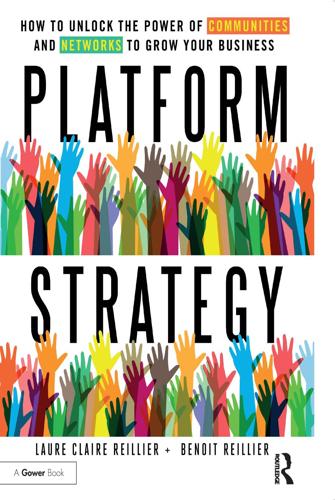
Open for Business Harnessing the Power of Platform Ecosystems
by
Lauren Turner Claire
,
Laure Claire Reillier
and
Benoit Reillier
Published 14 Oct 2017
Airbnb and Uber are cases in point.11 In only a few years, they, and others, have managed to secure market valuations in excess of $1 billion, gaining the nickname of ‘unicorns’.12 Aileen Lee famously coined the unicorn metaphor in 2013,13 but it looks like unicorn companies are not as rare as they once were, and perhaps should be called instead the new ‘workhorses’. Today, there are no fewer than 177 such companies14 that are worth over $1 billion each (the original definition of a ‘unicorn’). As illustrated in Figure 2.5, many of them exhibit strong platform characteristics.15 For example, Didi Chuxing (formerly Didi Kuaidi), headquartered in China, and Lyft, in the US, are platforms matching drivers and passengers 16 The meteoric rise of platform businesses Figure 2.5 Private value of platform-powered unicorn start-ups (US$ billions) Source: CB Insights, 1 August 2016, Launchworks analysis like Uber, and both have raised significant private investments.
…
You may then have to acquire them, decide not to enter in these international markets, or invest more to catch up at a later stage. Companies such as Rocket Internet are famous for such strategies. Creating barriers to growth: Some competitors prevent access to new markets. Tencent has repeatedly blocked the Uber app on WeChat in 2015,15 with a ban in December 2015 days after Tencent-backed Didi Chuxing announced a global partnership with Lyft, GrabTaxi and Ola.16 Competitive pressure was too hard for Uber, and it led Uber China to merge with Didi.17 Mature platforms have a range of strategic options available to deal with increased competitive pressures, but we’ll focus here on two generic responses: (i) creating a platform-powered ecosystem; (ii) adding sides to their existing business models.
…
Van Alstyne, Platform Envelopment, Harvard Business School Working Paper, 2010. Platform maturity: profitable growth 135 15 http://venturebeat.com/2015/12/06/uber-is-still-blocked-on-wechat-in-china-and-thesituation-is-getting-worse/ 16 http://venturebeat.com/2015/12/03/lyft-adds-grabtaxi-and-ola-to-its-faction-of-alliesagainst-uber/. 17 www.wsj.com/articles/china-s-didi-chuxing-to-acquire-rival-uber-s-chinese-operations1470024403. 18 Cainiao was formed by a consortium of existing logistics companies to give the project a running start. Alibaba itself took a 48% stake. 19 See https://techcrunch.com/2016/03/14/alibaba-backed-logistics-firm-cainiao-landsfunding-at-a-reported-7-7b-valuation/. 20 Internet.org is a partnership between Facebook and six companies (Samsung, Ericsson, MediaTek, Opera Software, Nokia and Qualcomm).

Virtual Competition
by
Ariel Ezrachi
and
Maurice E. Stucke
Published 30 Nov 2016
Daisuke Wakabayashi, “Apple Targets Electric-Car Shipping Date for 2019,” Wall Street Journal, September 21, 2015, http://www.wsj.com/articles/apple -speeds-up-electric-car-work-1442857105. “Apple Invests in Chinese Uber Rival Didi Chuxing,” BBC News (May 13, 2016), http://www.bbc.co.uk /news/business-36283661; “Apple Invests $1bn in ‘Chinese Uber’ Didi Chuxing,” The Telegraph (May 13, 2016), http://www .telegraph.co.uk /technology/2016/05/13/apple-invests-1bn-in-chinese-uber -didi-chuxing/. NDTV Correspondent, “Google Reportedly Wants More of Its Apps Preinstalled on Android Devices,” Gadgets360 (September 29, 2014), http://gadgets .ndtv.com/mobiles/news/google-reportedly-wants-more-of-its-apps-pre installed-on-android-devices-599478.
…
For example, you could compete against hotels and hostels through the accommodations app Airbnb or Booking.com. These online platforms facilitate entering the accommodation market in hosting guests at our own residences. In the same vein, it is a lot easier for drivers to enter the taxi market through a ride-sharing app, such as Uber, Lyft, or Didi Chuxing, than to acquire a taxi medallion or a cab. Online platforms can facilitate a competitive market by mitigating the seller’s actual (or perceived) risk and costs of entering. The risks of renting my place to a stranger may appear daunting. So platforms like Airbnb pro- The Promise of a Better Competitive Environment 7 vide information and ratings of potential guests and a “Host Guarantee” that reimburses eligible hosts for damages up to $1,000,000.20 In a similar vein, Uber provides its drivers with a passenger rating, which is an average rating of those provided by all of a passenger’s previous drivers, which is not immediately available to the passenger.
…
In 2015, Google’s cars were already “averaging 10,000 new self-driven miles a week, mostly on real-world city streets—not on controlled test tracks.”24 In 2015, Apple was also rumored to be launching an electric car that may eventually be self-driving.25 In addition, 2016 saw a significant investment by Apple in Didi Chuxing, a leading Chinese carhailing app.26 The investment, amounting to a billion dollars, formed part of Apple’s strategy in China, and may well affect the increasingly complex Frenemy dynamic to which Uber is party as well. When, in the future, consumers start using Google’s (and perhaps Apple’s) driverless cars and ride-sharing ser vices, the super-platforms have the potential to become a powerful force in these downstream markets.
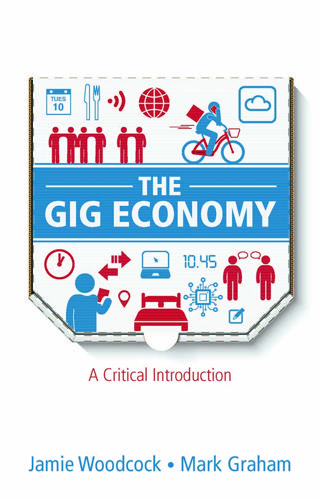
The Gig Economy: A Critical Introduction
by
Jamie Woodcock
and
Mark Graham
Published 17 Jan 2020
While there was little participation in Bangalore in the previous strike, the union represents around 55,000–60,000 drivers.5 While they are yet to win concessions from Uber, it shows that sustained organization is possible. The picture is complicated by the fact that Uber has been banned in a number of countries (while remaining to operate in some). Similarly, Uber has pulled out of China, leaving Didi Chuxing as the dominant company, while selling to Grab in Singapore and neighbouring Southeast Asian countries. In June 2018, drivers at Didi Chuxing went on strike across China. The action took different forms. For example, in Shaodong, Hunan, hundreds of workers were involved in a strike that lasted six days. They posted their grievances online, citing lost bonuses, high commission and long journeys for pickups.
…
Bezos’ letters 87–8, 106 Turkopticon 106–7, 123, 133 Anderson, B. 80 Antunes, Ricardo 36 application programming interfaces (API) 58 apps 5, 51, 52, 133, 138 artificial intelligence 50, 58, 60, 66 Aslam, Yaseen 76 assembly line 24, 94, 117 Australia 127 Australian Independent Contractors Act 128 automation 66–7 Avendano, Pablo 73 B Badger, Adam 86–7 Bangalore (India) 98–9, 102 Barbrook, R. 37 Barry, J. 49 Beck, Ulrich 17 Bent, P. 13, 16 Berg, J. 55 Besant, Annie 14 Bezos, Jeff 87 Bolt 77 Bourdieu, Pierre 17 ‘BrainWorkers’ 33 Braverman, Harry 111 Bryant and May match factory 14 C Californian Ideology 37 call centres 24, 31 outsourcing of 37, 54 Callinicos, Brent 49 Cameron, A. 37 Cant, Callum 40, 96 capitalism cognitive 37 gendered basis of 29 car industry 110 care work 64, 66, 79–83 low barriers to entry 67 and repeat transactions 68 Care.com 80, 80–1 casualization 5, 15 Caviar 73 ‘ChainWorkers’ 33 Cheung, Adora 103 China worker resistance and strikes 100 Christie, N. 73 cleaning work 5–6, 64 low barriers to entry 67 migrant workers 30 cloudworker platforms 6, 43, 53–61, 63, 64, 69, 93 atomization of 92 availability of 56 location of 55, 57 removal of barriers to entry for 69 and resistance 104–8 setting rates of pay 65 and spatial control 63 temporal control 64 cognitive capitalism 37 collaborations 123, 132, 136 collective bargaining 30, 34, 37, 49, 80, 130, 134, 135–6, 143 collective organization 100, 134 commercial content moderation (CCM) 61 computerization 66 consumer attitudes/preferences 27 contingent work 19 Convention on Platform Work, Draft 130, 146–51 cooperatives, platform 138–9 Countouris, N. 129 Craigslist 22 crowdsourcing 58 crowdworkers 55, 90 see also microwork; online freelancing D Dalla Costa, Mariarosa 29 Darcy, Alison 60 data collection 65–6 De Stefano, V. 129 deindustrialization 36, 84 Deliveroo 2, 6, 23, 32, 40, 71–4, 115, 127 experience of working for 7–8, 31, 71, 72–4 self-organization for workers 95 strike action 95–6, 97 delivery work(ers)/platforms 5, 27, 62, 63, 68 and automation 67 and collective organization 134 experiences of workers 71–5 low entry requirements 67 see also Deliveroo democratic ownership 136–40, 141 Denmark 3F trade union 134–5 Desai, Bhairavi 79 developing countries internet penetration rate 25 Didi Chuxing 22, 102 digital divides 25 digital legibility 23–5, 65–7 digital platforms 1, 2, 3, 4, 54–5 Directive on Transparent and Predictable Working Condition in the European Union 129 dock work(ers) 13–14, 15, 38 strike (1889) 15 domestic work(ers) 29–30, 62, 63, 66, 79–83 as central component of capitalism 29 factors determining working conditions 80 numbers 80 positive and negative outcomes for 81 and repeat transactions 68 in South Africa 81–3 Doogan, Kevin 18 E economic crisis (late 1970s) 33 Elance 22 entertainment industries 135 Eurobarometer 40 European Commission 35 Expensify 60 F Facebook 45, 60, 121, 123, 133 factories/factory work 15–16, 94 measuring of factory labour process by Taylor 23–4 Fair Crowd Work website 123 Fairwork Foundation project 121–2, 130, 146–51 Farrar, James 75, 75–6, 77–8, 101 feedback 52, 80, 92, 93 financial crisis (2008) 35 Fiverr 20, 23 flexibility, desire for by workers 4–5, 30–3, 71, 115 flexicurity 35 Flipkart 22 Foodora 127 Fordism 117 fragmented work 5, 40, 114 Freelancer 6, 54, 64, 89 freelancing, online see online freelancing Frey, C.B. 66 G gamification 86 gender and capitalism 29 and relationships of work 28–30 geographically tethered work/platforms 5–6, 7, 34, 50–2, 63 control over workforce 68 forms of resistance in 94–104 setting rates of pay 65 temporal control 64–5 Ghana 8, 64, 92 gig economy advantages 4–5 characteristics 114–15 controversy over classification of people involved 43–4 existence due to digital transformation 114 factors facilitating growth of 19, 114 five principles for ‘fair work’ in 122 future 112–45 governance in 62 meaning of 3–7 numbers working in 1–2 operation of 41–69 origins 11–40 pitfalls 5, 116 preconditions that shape the 19–28 rise of 38–40 ways to bring about change 142–4 gig economy workers barriers to entry for 67–8 communicating with each other 132–4 de-personalization of 118, 120 desire for flexibility 4–5, 31–3, 71, 115 experiences of 70–92 invisibility of 6, 80 lack of collective voice 6, 77 lack of effective regulation for 128–9 misclassified as self-employed 44 numbers 39–40 securing protection through courts 127 working conditions 6, 9 gigs, musical 3 Global North 12, 13, 32, 46 and cloudworkers 55 and microwork 84 and outsourcing 44 size of gig economy 39 Global South 32, 46 internet penetration rate 25 size of gig economy 39 women and online freelancing 90 globalization 19, 37–8 Goodwin, Tom 45, 121 Graeber, David 31 Guru.com 22 H Handy 80 Harvey, David 33, 53 Heeks, Richard 39 Herman, S. 39 Hilfr.dk 134–5 Homejoy 68, 103–4 Howe, J. 58 human intelligence tasks (HITs) 60 Humphries, S. 13–14 Hunt, A. 28, 81, 82 Huws, U. 39–40 I IAEA (International Arts and Entertainment Alliance) 135 Iles, Anthony 32 ILO (International Labour Organization) 16–17, 129 Declaration of Philadelphia (1944) 142 Independent Workers Union of Great Britain see IWGB India delivery drivers 74 strikes by Uber drivers 102 Industrial Workers of the Word see IWW industrialization 16 interface 45 International Arts and Entertainment Alliance see IAEA International Labour Organization see ILO Internet access and penetration rate 25 Irani, Lilly 106 IWGB (Independent Workers Union of Great Britain) 73, 97, 101, 109, 127, 134 IWW (Industrial Workers of the World) 97, 101 J James, Selma 29, 81 job insecurity, growth in 18–19 K Kalanick, Travis 23, 48, 49 Kalleberg, A.L. 18 Kenya Ajira Digital programme 35 Kessler, Sarah 11 L labour law 114, 117, 126, 128, 129 Lagos (Nigeria) 89, 124 Lanier, Jaron 58 LaPlante, Rochelle 60 lean platforms 35, 45 legibility, digital 23–5, 65–7 Li, Qi 100 Limer, Eric 85–6 Living Wage Foundation 122 London taxi arrangement 47 long-term unemployment 18 low-paid work, increase in 35, 139 M Machingura, F. 81, 82 McKinsey 1–2, 39 McKinsey Global Institute 66 Manila (Philippines) 89, 90 Maputo (Mozambique) 26–7 Marsh, Greg 129 Marx, Karl 11–12, 22, 72, 121 Mason, Paul 35 mass connectivity 25–7 Massey, Doreen 63 Matchwoman strike 14 Mateescu, A. 79, 80, 81 Messina, Jim 48–9 microwork 6, 55, 58–61, 62, 83–9, 104 and automation 66–7 experiences of workers 83–9 feelings of alienation 88 numbers engaged in 83–4 wages 84–5 see also Amazon Mechanical Turk 59 migrant workers 30, 80, 90 migration status 30 Mitropoulos, Angela 17, 32 mobile phones 25–6 Mondragon Corporation 138–9 Moody, Kim 40, 111 Moyer-Lee, Jason 98 N Nedelkoska, L. 66 neoliberalism 18, 33–5, 52 characteristics of 34 New York Uber 78–9 NHS (National Health Service) 5 Novogratz, Mike 49–50 O O’Connor vs Uber Technologies Inc. (2015) 124, 126 Ojanperä, Sanna 55 Ola 102 online freelancing 6, 7, 8–9, 43, 55, 62, 141 barriers to entry for workers 67 barriers to organizing 104 experiences of workers 89–92 and feedback 93 reasons for doing 89–90 support forums 104–5 wages 90, 91 and worker resistance 104–5 Osborne, M.A. 66 outcome thinking 118, 124 outsourcing 19, 37–8, 39, 44–5, 51, 54 microwork as extension of 58 P Pandor, Aisha 83 Pasha, Tanveer 102 pay rates, setting of 65 Peck, Jamie 33, 35 Peterloo Massacre (1819) 108 Platform Cooperative Consortium 138 platforms/platform work 2, 4 ability to set pay rates 65 and accountability 125–30 barriers to entry for workers 67–8 as a civic utility 139–40 cloudwork see cloudwork connecting workers and clients 20–1, 22–3, 43, 138 cooperatives 138–9 core functions 23 degree of explicit coordination 68–9 democratic ownership of 136–40, 141 digital legibility 23–5, 65–7 Draft Convention on Platform Work 130, 146–51 early 22 geographically tethered model see geographically tethered model infrastructure 20–3 intermediate function 42–3 lean 35, 45 meaning and operation of 42–6 microwork see microwork negotiation-based matching 22–3 reliance on network effects 45 repeat transactions 68 setting up of ‘counter’ 123 spatial control 62, 63–4 spatiality and temporality of 42–3 spending money on public relations and advertising 28 static-price matching 23 temporal control 64–5 understanding how they work 61–9 Plouffe, David 49 Pollman, E. 49 precariat 18 precarious work(ers) 13–19, 32–3, 38 definition 16–17 two kinds of 33 profitability, crisis of 35, 36, 42 public sector and gig economy 17 and outsourcing 44 Q Quintini, G. 66 R racialization of work 30 racism 30 ratings strategy and transparency 122–3 Ravenelle, Alexandrea 37, 70 Raw, Louise 14 Reagan, Ronald 34 reddit 123 regulation 144 lack of for gig economy workers 128–9 labour law 19, 114, 117, 126, 128 state 19, 33–6 regulatory entrepreneurship 49 repeat transactions and platforms 68 resistance see worker resistance Roberts, Sarah 61 S SAG-AFTRA 135 Samman, E. 28 Schifter, Doug 79 Scholz, Trebor 48, 49, 138, 139 Schor, Juliet 103 Screen Actors Guild (SAG) 135 Second World War 110 self-employment 32, 43–4, 96, 98, 108 Semuels, Alana 84 service industries, growth of 34 Seymour, Richard 18–19 sharing economy 11 Shekhawat, Dushyant 74 ‘shock doctrine’ 34 short term contracts 4 Silberman, Six 106 slavery 30 Slee, Tom 50, 78 soldiering 23 South Africa domestic workers in 81–3 Uber 76, 127–8 worker resistance 99–100 South African Domestic Services and Allied Workers Union (SADSAWU) 82–3 South African Labour Relations Act 128 South Korea 35 South London Gas Workers strike (1889) 14–15 Spain 127 spatial control and platforms 62, 63–4 Srnicek, Nick 4, 42, 45 standard employment relationship 5, 12–13, 16, 18, 32, 33–4 Standing, Guy 17–18, 27 state regulation 19, 33–6 strikes 14–15, 94, 95–6, 99–100, 109, 142–3 preconditions for starting 109 surveillance 24 of delivery drivers 74 Upwork workers’ resistance to 105 Susskind, R. 118 SweepSouth 80, 81–3 Switzerland Notime 102 T TaskRabbit 103 taxi industry 51–2 taxi work(ers) 75–9, 134 and collective organization 134 see also Uber Taylor, Bill 100 Taylor, Frederick 23–4 Taylor, Matthew 129 Taylor Review of Modern Working Practices, The 129 technological changes 19, 21 temporal control and platforms 64–5 temporary work(ers) 3, 17 Thatcher, Margaret 34 Thompson, S. 34 Ticona, J. 79, 80, 81 Tillett, Ben 14 tipping 75 Tolpuddle Martyrs 108–9 trade unions 6, 18, 34, 36, 92–3, 97, 108–9, 134, 135, 143–4 decline of 36, 37 and dock workers 15 early 108–9 and gig economy workers 109–10, 136 and IWGB 97 rise in membership 15 textile 108 Transnational Federation of Couriers 97 transparency 118–24, 141 establishment of ‘counter platforms’ 123 ratings strategy 122–3 Transport for London 28 Turkopticon 106–7, 123, 133 U Uber 2, 4, 20, 23, 25, 32, 44, 45, 46–50, 52, 61, 73–9, 94–5, 108, 115, 121, 124, 139 business model 48 Change.org petition 28 data collection 50, 65–6 drivers’ wages 49–50, 77–8 engagement with regulation and transport policy 48 funding 47–8 and ‘greyballing’ 49 in New York 78–9 O’Connor vs Uber Technologies Inc. (2015) 124, 126 power passengers hold over drivers 75–6 public relations and lobbying campaigns 48–9 rating system 75 safety issues and rising petrol prices for drivers in South Africa 76–7 and self-driving vehicles 50 and tipping 75 Uber International Holding(s) BV 128 Uber Technologies SA 127 UberX 47 worker resistance and strikes 100–2 unfair dismissal 44, 134 United Kingdom employment regulation issues 129 neoliberalism 34 and outsourcing 44–5 worker resistance and strikes 100–1 United Private Hire Drivers (UPHD) 75 United States neoliberalism 34 Uber 47–9 UPHD (United Private Hire Drivers) 76, 101 UpWork 6, 8, 43, 54, 64, 121 resistance of surveillance methods by workers 105 Upwork.com 89, 91 US Chamber of Commerce 108 V van Doorn, Niels 42 Vandaele, Kurt 95, 97 venture capital 36 visibility 136 vWorker 22 W wages microworkers 84–5 online freelancing 90, 91 setting of pay rates 65 Uber drivers 49–50, 77–8 Ward, H. 73 Webster, G.E. 16 Weightman, G.E. 13–14 WhatsApp 95, 99, 123, 132, 133 Williams, Eric 30 women and domestic work 29–30 and online freelancing in the Global South 90 Wood, Alex 95, 104–5, 107 work, transformation of 12–13 worker power 19, 36–7, 130–6, 141 worker resistance 93–111, 113–14 and cloudworkers 104–8 and communication 107 food platform strikes 95–7 formation of networks and meetings 95, 98–9 geographically tethered work 94–104 history of 94 legal battles over employment status 98 and online freelancing 104–5 and self-employment status 98 strikes 14–15, 94, 95–6, 99, 100–1 taking of work off-platform 103 and trade unions 97, 107–11 Uber 101–2 and WhatsApp groups 98, 99, 132 workers’ rights 34, 44, 98, 101, 130, 135, 139, 140, 144 Y YouTube 60 Z Zomato 98–9 POLITY END USER LICENSE AGREEMENT Go to www.politybooks.com/eula to access Polity’s ebook EULA.
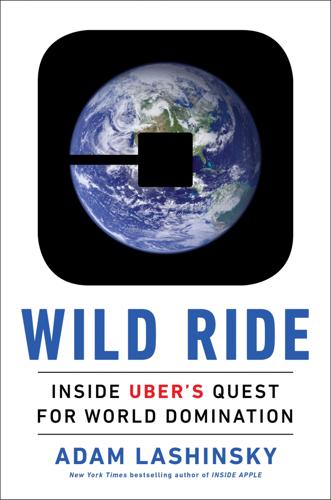
Wild Ride: Inside Uber's Quest for World Domination
by
Adam Lashinsky
Published 31 Mar 2017
Two executives are in the car with Kalanick, both critical to Uber’s Asian ambitions. One is Emil Michael, Uber’s chief business officer and the CEO’s all-purpose right-hand man, to whom on this very trip Kalanick has delegated the role of engaging in high-stakes and secretive negotiations to sell Uber’s China business to its chief rival, Didi Chuxing. The other is Liu Zhen, the head of strategy for Uber China and its best-known Chinese employee. Liu is also a first cousin of Jean Liu, the former Goldman Sachs banker who is president of Didi and whose father founded the computer behemoth Lenovo. The purpose of the call is to discuss whether or not Kalanick should travel as planned early the next day to Seoul for a most unusual appointment.
…
As part of a long-established goal of creating products that didn’t rely on fossil fuels—Musk had started the solar panel company Solar City, which he merged with Tesla in late 2016—the Tesla founder was assumed to be exploring a ridesharing service of his own. Kalanick had heard the rumors. When Apple, which was widely believed to be developing an electric car, invested $1 billion in Didi Chuxing, Uber’s competitor in China, Kalanick called Musk to suggest the two companies find a way to work together. “I said, ‘Look man, we should partner,’” Kalanick says, making the case that Apple constituted a bigger threat to Tesla than to Uber. Musk, says Kalanick, pooh-poohed the idea of a self-driving ridesharing service—and of totally autonomous cars altogether.
…
After everyone had spoken and the floor belonged again to the CEO, he turned it right back over to the locals: “Hi. I’m Travis. I started this damn thing. I’m ready for your questions.” Uber had at this point been in China for nearly three years. And while its business there was growing, the market was also a money pit. Locked in a battle with a homegrown rival named Didi Chuxing, Uber’s China unit was losing in the neighborhood of a billion dollars a year. In a legal and corporate governance maneuver it deployed only in the world’s second-largest economy, the San Francisco company had established Uber China as a separate entity, headquartered in Beijing. It did so for several reasons.

A Brief History of Motion: From the Wheel, to the Car, to What Comes Next
by
Tom Standage
Published 16 Aug 2021
Uber’s subsequent expansion into other countries around the world pitted it against local rivals using the same model: Ola in India, Didi Chuxing in China (itself the product of a merger between two Uber clones), Careem in the Middle East, and Grab in Southeast Asia. The ride-hailing market became fiercely competitive, prompting Uber to team up with local rivals in many parts of the world to avoid expensive price wars. It ended up merging its regional operations with those of Didi Chuxing in China, Grab in Southeast Asia, and Careem in the Middle East. The ride-hailing model pioneered by Uber has proved hugely popular—and hugely controversial.
…
And that was before the coronavirus pandemic whacked car sales. China has been the driver of car sales in the early twenty-first century, with the number of vehicles sold rising from 5 million in 2004 to 29 million in 2017. But sales have since slowed, spurred in part by a switch to ride hailing, which is an enormous industry in China. Didi Chuxing, the country’s ride-hailing giant, provides twice as many rides each day within China as Uber does in the rest of the world. (In 2018 Didi provided 10 billion rides within China, or about 30 million per day, compared with 14 million Uber rides a day globally.) A survey in 2016 by the consulting firm McKinsey found that 60 percent of Chinese consumers no longer considered owning a car to be a status symbol, and 40 percent said that owning a car seemed less important, because of the proliferation of alternatives, such as ride hailing, bike rental, and so on.

AI Superpowers: China, Silicon Valley, and the New World Order
by
Kai-Fu Lee
Published 14 Sep 2018
The O2O revolution was about bringing that same e-commerce convenience to the purchase of real-world services, things that can’t be put in a cardboard box and shipped across country, like hot food, a ride to the bar, or a new haircut. Silicon Valley gave birth to one of the first transformational O2O models: ride-sharing. Uber used cell phones and personal cars to change how people got around cities in the United States and then around the world. Chinese companies like Didi Chuxing quickly copied the business model and adapted it to local conditions, with Didi eventually driving Uber out of China and now battling it in global markets. Uber may have given an early glimpse of O2O, but it was Chinese companies that would take the core strengths of that model and apply it to transforming dozens of other industries.
…
Many overnight O2O unicorns died once the subsidy-fueled growth ended. But the innovators and gladiators who survived—like Wang Xing’s Meituan Dianping—multiplied their already billion-dollar valuations by fundamentally reshaping urban China’s service sector. By late 2017, Meituan Dianping was valued at $30 billion, and Didi Chuxing hit a valuation of $57.6 billion, surpassing that of Uber itself. It was a social and commercial transformation that was powered by—and which further empowered—WeChat. Installed on more than half of all smartphones in China and now linked to many users’ bank accounts, WeChat had the power to nudge hundreds of millions of Chinese into O2O purchases and to pick winners among the competing startups.
…
Renren, 42–43 lean startup methodology, 44–45 Ma, Jack, and, 34–37 search habit divergence and, 37–38 Silicon Valley and, 22–25, 28, 30–34, 39–40, 49 Wang Xing and, 22–24, 26, 31, 32–33, 42, 46–49 War of a Thousand Groupons, 45–49 Zhou Hongyi and, 40–42 corporate oligarchy, 171 corporate research and proprietary technology, 91–92 corporate social responsibility, 216–17 craftsmanship, 229 credit industry, 10–11, 110, 112–13, 116 crime disruption, 75 Cultural Revolution in China, 33 Cybersecurity Law in China, 125 D Daimler, 135 data age of, 14, 18 AI algorithms and, 14, 17, 56, 138 AI-rich countries and, 168–69 businesses and, 110–11 China’s abundance of, 15, 16, 17, 50, 55–56, 73, 79 collection of, and privacy, 124–25 deep learning and, 14, 17, 19–20, 56 internet companies and, 107–8 medical diagnosis and, 114 from mobile payments, 77 neural networks and, 9 pattern-finding in, 10 private, 124–25 self-driving cars and, 131–32, 133 structured, 111–12 Deep Blue, 4, 5 deep learning AI revolution and, 5, 12–13, 25, 92, 94, 143 business AI and, 111 data and, 14, 17, 19–20, 56 Google and, 92 history of, 6–10 implementation of, 12–14, 86 machine perceptual abilities and, 166 next, 91–92, 94 pattern-finding and, 10–11, 13, 166–67 rapid progress of, 161 DeepMind AI in United Kingdom and, 169 AlphaGo and, 2, 11 AlphaGo Zero and, 90 Google and, 2, 11, 92 iFlyTek compared to, 105 publishing by, 91 reinforcement learning and, 143 Deng Xiaoping, 28 desktop computers, 96 Dianping (Yelp copycat), 48, 49, 71–72 Didi four waves of AI and, 106 going heavy, 72–73 self-driving cars and, 131 services using model of, 213–14 Uber and, 40, 68–69, 79, 137 Didi Chuxing, 68–69, 70 discovery to implementation, transition from, 13, 15 Disneyland replica in China, 31 Disruptor (Zhou), 42 DJI, 130–31 domestic workers, 130 drones, autonomous, 130–31, 136, 167–68 dual-teacher model, 122 dystopians vs. utopians, 140–44 E EachNet, 35 Eat24, 72 eBay, 35–37, 39 economy and AI, 144–73 competition and, 106 deep-learning breakthroughs and, 4–5 general purpose technologies (GPTs), 148–55 global economic inequality, 146, 168–70, 172 intelligent vs. physical automation, 167–68 job loss, two kinds of, 162–63 job losses, bottom line, 164–65 job loss studies, 157–61 jobs and inequality crisis, 145–47 machine learning as driver, 25, 84, 91, 94–95 monopolies, 20, 96, 168–69, 170–71 psychological crisis, 5, 21, 147, 173–74 risk of replacement, 155–57 science-fiction visions and, 144–45 techno-optimists and the Luddite fallacy, 147–48 unemployment.
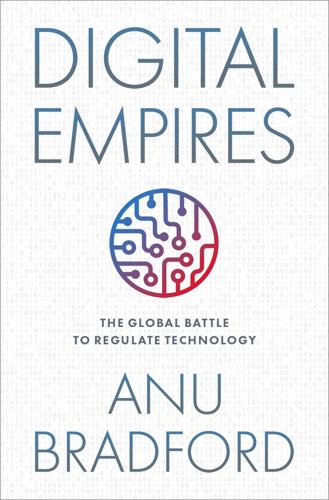
Digital Empires: The Global Battle to Regulate Technology
by
Anu Bradford
Published 25 Sep 2023
Instead, the bans on individual apps may only distract the US from the task of developing comprehensive solutions to protect data privacy and national security—both of which are under threat and lacking effective policy solutions.161 An all-encompassing data privacy regime could also help the US in its dealings with the Chinese and Europeans alike: in addition to allowing the US to respond to the threat of Chinese tech companies’ data collection, it would also help resolve the regulatory battles over data privacy with the Europeans, as discussed in Chapter 6. Restricting Chinese Listings in the US: DiDi Chuxing TikTok is not the only Chinese tech company finding itself caught between irreconcilable demands of American and Chinese regulators. Such intractable conflicts now also threaten Chinese tech companies listed on US stock exchanges. The stock market has become an increasingly heated battlefield as of late, raising the risks of a financial decoupling of the US and China. The 2021 New York Stock Exchange (NYSE) listing of DiDi Chuxing, a Chinese ride-hailing company comparable to Uber or Lyft, illustrates this evolution well.
…
In 2020, TikTok, a social media company owned by the Chinese company ByteDance, was attempting to comply with the US government’s requirement that the company must find a US buyer—under the threat of being banned from the US market—only to learn that the Chinese government responded by prohibiting all artificial intelligence exports, thereby threatening the very sale that the US government required.66 Similarly, the Chinese ride-hailing company DiDi Chuxing found itself caught between the conflicting demands of the Chinese and US governments regarding the disclosure requirements associated with Chinese companies’ initial public offerings (IPOs) in the US. The US Securities and Exchange Commission asked DiDi to hand over data, which the Chinese government maintained could not leave China.
…
Its wide-reaching regulatory crackdown of the tech sector started with the suspension of the fintech company Ant Group’s planned $37 billion initial public offering—the largest IPO in history—in November 2020,159 followed by a $2.8 billion antitrust fine for the e-commerce giant Alibaba in April 2021.160 Two days after fining Alibaba, Chinese regulators ordered Ant Group to restructure its operations and become a financial holding company subject to central bank supervision.161 Next in line was the ride-hailing service DiDi Chuxing, whose data practices triggered a government investigation just days after the company’s $4.4 billion IPO on the New York Stock Exchange.162 Citing cybersecurity risks that the company posed to its customers, Chinese regulators ordered DiDi’s app to be removed from app stores in July 2021—within a week following the IPO—sending the company’s stock price tumbling,163 and resulting in a record high $1.2 billion fine imposed on the company in July 2022.164 In July 2021, the government blocked the proposed $5.3 billion Tencent-backed merger between DouYu with Huya, China’s two leading streaming operators.165 Another antitrust action followed in October 2021, with a $530 million fine imposed on Meituan, the food delivery giant, for its monopolistic practices.166 In parallel with targeting specific companies with enforcement actions, the government enacted a flurry of legislative measures between February and August 2021 to further assert control over the tech industry.
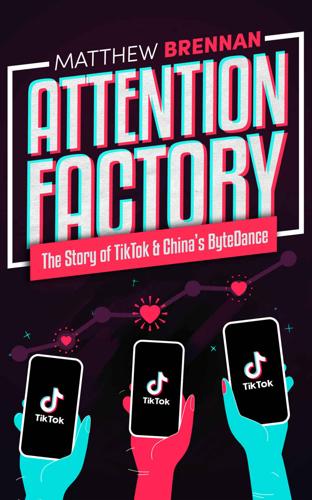
Attention Factory: The Story of TikTok and China's ByteDance
by
Matthew Brennan
Published 9 Oct 2020
As it turned out, Yuri Miler’s investment company DST (Digital Sky Technologies), already had offices in Beijing. It was one of the most prolific and successful foreign investors in China’s internet industry, having backed an all-star lineup of Chinese companies, including Alibaba, JD.com, Meituan, Didi Chuxing, and Xiaomi. DST sent partner Shou Zi Chew to meet with Yiming. He left that meeting optimistic, noting the app’s growth trajectory, and judging Yiming to be a robust and capable founder with conviction in the company’s direction. Yuri agreed to lead the Series B round, making an investment that netted him 7.2% of the company, which was reportedly valued at $60 million. 62 Today that stake, even after dilution, is worth multiple billions of dollars.
…
AVIC Plaza, the new head office, was characterized by its high ceilings and sizable open-plan central space—a vast former aviation museum, it had now become an “attention factory. ” A new term, TMD, started appearing in the Chinese tech media to describe a group of rising internet stars, challengers to the old guard of Baidu, Alibaba, and Tencent. T stood for Toutiao. Up until 2018, Chinese media always referred to ByteDance as “Toutiao.” M stood for Meituan, the leading online food delivery and restaurant listing platform founded by Yiming’s friend Wang Xing. D stood for Didi Chuxing, the Chinese ride-hailing equivalent of Uber. Above: A group photo of leaders at the 2015 Wuzhen Summit, China’s most prestigious internet conference. Yiming’s position on the furthest left side at the back indicates he is arguably the least important person present. In contrast, Alibaba CEO Jack Ma, Tencent CEO Pony Ma, Baidu CEO Robin Li, and LinkedIn founder Reid Hoffman stand centrally and directly behind Chinese leader Xi Jinping. 116 Yiming learned to take greater care of his appearance.

The Upstarts: How Uber, Airbnb, and the Killer Companies of the New Silicon Valley Are Changing the World
by
Brad Stone
Published 30 Jan 2017
Subsidizing rides at that scale made each company desperate for new capital. Uber raised over $4 billion in 2016, including a controversial $3.5 billion round from an unlikely investor—Saudi Arabia’s Public Investment Fund. It pushed off an initial public offering and funneled capital to its Uber China subsidiary. Didi Kuaidi, now renamed Didi Chuxing (“honk-honk commute”) went toe to toe with its U.S. rival, raising $7 billion in 2016 and swelling its ranks to over five thousand employees, about a quarter of them working out of a collection of prefabricated five-story buildings on the periphery of Zhongguancun, Beijing’s technology district.
…
We know this revolution is a technology revolution, and we are just witnessing the very beginning.” By fighting hard and being every bit as dogged as Uber, in investor boardrooms and on the battlefield, the Chinese CEO had repelled a foreign invader, ended the global mega-unicorn death match on auspicious terms and secured for Didi Chuxing its rightful place among the upstarts. “Cheng Wei is a fierce competitor. He has a champion’s mindset,” Kalanick told me, referring to one of his prized cultural values. It was the highest possible compliment the chronically combative Kalanick could pay to an archrival. But it disguised a subtler truth: he too had pulled off something remarkable.
…
Tom Giles, Jillian Ward, Peter Elstrom, Nate Lanxon, Aki Ito, Emily Biuso, and Alistair Barr are incredible colleagues who gave me air cover while I was occupied by the pursuit of elusive facts and coherent sentences. Eric Newcomer, Ellen Huet, Mark Milian, Jim Aley, and Max Chafkin read the manuscript early and offered crucial advice. Lulu Chen helped me report the remarkable story of Didi Chuxing in Beijing. Emily Chang was an empathetic confidante as I worked through the challenges of telling this story. And my longtime colleague and co-conspirator Ashlee Vance was, as always, an inspiration and sounding board whenever I needed to find my footing. Once again, I owe a big thank-you to Nick Sanchez, who ably helped with research and reporting.

Gambling Man
by
Lionel Barber
Published 3 Oct 2024
He sold Wall Street a fantasy of joyous communal living like the kibbutz in Israel with an entrepreneurial twist.7 In March 2017, Neumann travelled to Tokyo to celebrate SoftBank’s $4.4bn investment and divvy up the proceeds: some $3.1bn for global expansion, with SoftBank using the balance ($1.3bn) to acquire WeWork stock. For all Neumann’s talk about profit with purpose, he stood to gain several hundred million dollars, one of the most lucrative sales of stock by any start-up CEO. Once the paperwork was signed, Masa had a surprise in store. He retreated to his private dining room where Cheng Wei, founder of Didi Chuxing, the number-one ride-hailing app in China, sat waiting. Didi had beaten its US rival Uber in a brutal price war. Having backed both sides, Masa was now promising a further $6bn to power Didi’s global ambitions. Adopting the role of father-mentor, Masa said Neumann had lessons to learn from the shoot-out in China.
…
In this sense, he was little different from President Trump, who relished the idea of negotiating peace with Vladimir Putin or Kim Jong-un of North Korea. Masa saw himself as the bridge between the West and Asia, and was a leading investor in China for more than a quarter century. The SoftBank Vision Fund portfolio had invested hundreds of millions in China’s leading tech companies such as ByteDance, owner of TikTok, and Didi Chuxing, the ride-hailing app. Masa felt he had every right to feel secure, but he failed to understand that President Xi was a break from the past. Masa was not alone. Even Jack Ma miscalculated. Back in October 2020, Ma had delivered a speech criticizing Chinese financial regulators, accusing them of a ‘pawnshop mentality’ suffocating economic growth and stifling innovation.
…
/Softbank (2005), 174–7; Goldman Sachs exits, 171; managing of SoftBank’s stake in, 306, 307, 308, 309, 322; Masa’s deal (1999), 142–4, 147, 236, 262, 278; Masa’s investment in, 4, 144, 147, 169–71, 174–7, 262, 278, 296, 306–7, 314; Masa’s long-term faith in, 170–71, 176, 315; psychological impact on Masa, 147, 278; SoftBank as overly dependent on, 177, 321, 322; Taobao launched (May 2003), 169–71 Alta Vista, 101 Altman, Sam, 327, 330, 335 Amazon, 101, 132, 307, 312, 329 Ambani, Anil, 182 America Online (AOL), 2, 102 Anderson, James, 253 Anderson Mori & Tomotsune (law firm), 311, 314 Andreessen Horowitz, 282, 283 Ansett Airlines, 113 Apax (private equity firm), 241 Apple Computer, 35, 48, 56, 89, 178, 190, 307, 312; Apple II, 72, 73; and ARM chips, 244, 245, 247, 330; Foxconn manufactures iPhone, 268, 286; iPad, 192; iPhone, 4, 190–91, 192–3, 227–8, 268, 286; Jobs’ return to, 102–3, 190; Think Different advertising campaign (1997), 189; and Vision Fund, 266, 289 Aramco oil company, 260, 264 Argentina, 295 Ariburnu, Dalinc, 259 Arimori, Takashi, Net Bubble (2000), 163 ARM Holdings, 242, 244–55, 259, 265–6, 323, 329–31 Arora, Nikesh, 232, 233–5, 236–43, 259, 287, 288–9 artificial intelligence (AI): AGI (artificial generative intelligence), 328–32; and ARM Holdings, 265, 323, 329–31; ‘first wave’ of AI-related companies, 328–9; Masa’s current plans, 327–31, 334–5; Masa’s embrace of/optimism about, 203, 210, 211, 265, 319, 323, 327–35; Masa’s new chip-making venture, 329–30, 334–5; next generation of computer graphics chips, 304–5, 308, 323, 329–31, 334–5; and Nvidia, 304–5, 305*, 323, 330–31; and surveillance/security, 265–6; today’s dark debates about, 331, 332 Asahi Shimbun newspaper, 56, 64, 149–50 Asahi Weekly magazine, 56, 149 ASCII (Japanese computer magazine), 65 Asian Cup football tournament, 175 AstraZeneca, 248, 249 AT&T, 75, 165, 192, 224, 225–6, 227 BAE Systems, 249 Baillie Gifford, 253 Bain Capital, 288 Baker III, James A., 70 Bartz, Carol, 232, 233 baseball, 188, 196–7 Al-Bassam, Nizar, 259–60, 262, 263–4, 269 Bear Stearns, 193–4 Beijing, 142–3, 175–6, 226, 324 Bell Laboratories, 74, 75 Benchmark Capital (VC company), 283, 301 Berkeley, University of California, 27, 36–9, 40–43, 55–6, 101, 102 Berkshire Hathaway, 273–4, 296–7 Bezos, Jeff, 307 Bhanji, Nabeel, 296, 301 Bit Valley Association, 1, 3 BlackRock, 290 Blackstone, 167, 268, 288 Blair, Tony, 294 Blavatnik, Len, 239–40 Blodget, Henry, 132 Bonfield, Sir Peter, 156–7 Boston Dynamics, 275 Braun, Markus, 305–6 Brightstar, 227–8 Brin, Sergey, 232–3, 235 British Telecom (BT), 156–7, 172, 235 BSkyB, 112, 116, 117 Buffett, Warren, 84–5, 273–4, 296–7 Businessland, 83 Buzzfeed, 237–8 Cadbury, 248 California, 27–8, 33–4, 101–2, 108–9, 133, 174–5; academic-entrepreneur model on university campuses, 27–8, 37, 101–2; Berkeley, University of California, 27, 36–9, 40–43, 55–6, 101, 102; Fairmont Hotel, San Jose, 140, 148; Masa’s education in, 30–34, 35, 36–9, 40–47 see also Oakland, California; Silicon Valley, California Cameron, David, 250, 251, 294 Canon, 43 Carlson, Chuck, 41, 45 Casio, 43 Cayman Islands, 308 Centricus, 259–60 Cerberus, 185 Chambers, John, 162 Chambers, Stuart, 245–7, 249–50, 252 ChatGPT, 327, 328 Cheng Wei, 273 China: (B2C) consumer market in, 169–71, 174–7; ByteDance, 284, 321, 328; China Mobile, 225, 235; Communist party, 5–6, 144, 175, 314, 321–2; confrontation with Trump, 320; Deng Xiaoping’s reforms, 144; Didi Chuxing ride-hailing app, 273, 284, 321, 328; geopolitical impact of Xi Jinping, 314, 321–2, 324; and the internet, 4, 142–4, 145–6, 147, 158, 168–71, 174–7, 284, 328; iPhone manufactured in, 286; Japanese invasion of (1937), 11; Masa as largest foreign investor, 4–5; Masa as minor celebrity in, 142–3; Masa’s first visit to (1995), 144–5; relations with Japan, 175–6; SoftBank’s venture capital fund in, 142–3; stimulus programme (2009), 201; and Taiwan, 17; Tencent, 307; Tsinghua University in Beijing, 102*; UTStarcom, 145–6, 158; World Trade Organization entry, 147 Chudnofsky, Jason, 95 Cisco Japan, 89–90, 103, 162 Cisco Systems, 89–90, 137, 139, 143, 162 Claridge’s hotel, 261 Claure, Marcelo, 227–31, 240, 242, 287–8, 289, 316–17, 318, 323–4 Clearwire, 231 CNET, 164 Colao, Vittorio, 180 Collins, Tim, 171–4 Columbia Pictures, 80, 101, 119–20 Comcast, 240 Compuserve, 102 computer technology: AI-driven computer graphics chips, 304–5, 308, 323, 329–31, 334–5; Altair 8800 microprocessor, 33; ARM chip, 244–5, 247–8, 253, 265–6, 308, 323, 329–30; chips as scarce and most crucial resource, 331; Comdex (trade fair in Las Vegas), 72, 89, 93, 94–6, 97, 124, 189, 267–8; electronic speech translators, 37, 39–45, 48, 114, 171*; Fujita’s advice to Masa, 26; innovation in 1970s California, 27–8, 33–4, 37, 101–2; Intel 4004 chip, 35; Intel 8080 microprocessor, 33; ‘internet of things’, 244, 245, 246, 253, 254–5; invention of integrated circuit, 27; Masa at Berkeley, 36–9; memory board manufacturers, 108–11; Microsoft-Novell rivalry, 76–7; Mozer’s talking calculator, 37; networking hardware/software, 77, 89–90, 143; Novell’s ‘netware’, 76–7; personal computer revolution, 49, 51, 53–4, 74–5; Unix operating system, 75 see also artificial intelligence (AI); internet; mobile internet; software technology; telecoms Computer Weekly, 78 Confucian thought, 119, 146, 147 Costner, Kevin, 129–30 Cotsakos, Christos, 134 Coupang, 236, 319 Covid-19 pandemic, 298–302, 303, 306, 312, 314, 315, 320, 326*, 328 credit rating agencies, 184–5, 229, 306 Credit Suisse, 306, 319 Cringely, Robert X., Accidental Empires, 163 Dai-Ichi Kangyo Bank, 55, 61, 63, 98 Daoist thought, 146 DataNet (magazine publishing company), 69 Davos, World Economic Forum, 2, 147, 148, 167, 294 Deadwood, South Dakota, 129–30 Democratic Party of Japan, 220 Deng, Wendi, 120–21 Deng Xiaoping, 144 Deutsche Bank, 124, 181–4, 185, 235, 237, 259, 283, 304 Doko, Toshio, 119 Dolotta, Ted, 74–8, 91, 103 Domaine de la Romanee-Conti (DRC) wine, 239, 246, 333 DoorDash, 283, 328 dot-com bubble (1998-2000), 132–6, 138–41, 147–8, 190; AOL-Time Warner merger (2000), 2; bursting of, 4, 145, 148–51, 156, 284, 328; eVentures fund, 121; Masa’s investments during, 133–6, 138–41, 143–4, 148, 284, 328; Masa’s reinvention after crash, 4–5, 156, 201; SoftBank’s stock peaks (February 2000), 3–4; Velfarre disco event (February 2000), 1–3, 148 Dream-Works, 236 Drucker, Peter, 52 E-Access, 160, 225 EachNet, 168, 169 EADS (aerospace company), 249 East, Warren, 245 eBay, 168–9, 174, 176 economy, global: China as ‘last frontier’, 144; Covid disruption, 314; financial crisis (2008), 83, 193–6, 201; hyper-globalization, 4, 5; impact of Russo-Ukraine war, 324; inflation in post-Covid period, 320, 324; and Japan’s economic miracle, 21, 48, 178; Masa and the digital revolution, 1–5, 49, 121, 137–8, 157, 211, 244; new cold war protectionism, 5; Plaza Accord (22 September 1985), 69–70, 80; second oil price shock (1979), 48–9; World Economic Forum (Davos), 2, 147, 148, 167, 294 see also dot-com bubble (1998-2000) Edison, Thomas, 158 Eisner, Michael, 107* Elliott Management (Hedge fund), 295–8, 299–301, 302, 308, 313 Ellison, Larry, 140, 189–90, 235 entrepreneurship: of Sheldon Adelson, 93–5; emerging Chinese class, 142–3; of Den Fujita, 24–6, 33; Japanese resistance to change, 48, 83–4; Masa’s early money-making ventures in USA, 33, 36–7, 39–47, 171*; Masa’s limitless attitude to risk, 5, 54–5, 57, 133–4, 140–41, 159–61, 210–11, 273, 309–13, 331; of Mitsunori, 18–19, 20, 21–4, 54–5; as not consistent with perfection, 6; Sasaki as Silicon Valley mentor, 35; start-up ecosystem in Silicon Valley, 101–7, 127; story of Steve Jobs, 190; ‘term sheet’ convention in Silicon Valley, 284–5; and US universities in 1970s, 27–8, 37, 101–2 see also venture capital (VC) Ericsson, 188 Esrey, William, 172–4 E-trade, 134–5, 138, 139, 162, 164 E-Trade Japan, 138, 164 Excite, 101, 105 EY (accountants), 305, 306 Ezersky, Peter, 91, 93 Facebook (Meta), 236, 259, 297, 303, 307, 329 Fairchild Semiconductor, 101–2 Al-Falih, Khalid, 264 Feld, Brad, 133 Fentress, Chad, 314 film industry, 107*, 119, 129–30, 235, 236; Columbia Pictures, 80, 101, 119–20 Filo, David, 101, 102, 103–4, 105 financial/business sector: Black Monday stock market crash (1987), 108; Buffett on leverage, 297; buy-backs, 296, 297, 298–9, 300–301, 302; call options, 312; collapse of Lehman Brothers (15 September 2008), 194, 196, 197, 235; ‘conglomerate discount’, 295, 296, 308; Covid-19 emergency measures by central banks, 301–2, 312, 316; Dai-Ichi Kangyo loan, 55, 61; financial instruments, 181, 184, 235, 282, 312; hyper-globalization, 4, 5; IRR metrics, 127–8, 308–9; Japanese banks, 61, 80–85, 92, 95–6, 97–9, 136–7, 138–9, 300, 334; Japan’s ‘Little Bang’ (1993), 97–8; Japan’s ultra-low-to-negative interest rate policy, 98–9, 100; Jasdaq over-the-counter market, 76, 85, 90, 131; leveraged buy-outs, 127–8, 184–5, 191, 196, 240, 247, 274, 275, 300; “Man’s pride” (trust) in Japan, 87, 170–71, 195–6, 273; Masa’s use of opaque corporate structures, 123, 125–6, 127–9, 130, 296; Nasdaq stock market, New York, 2, 4, 138, 148, 149; old-school culture in Japan, 64, 82, 89–90, 119, 158, 195–6; preferred equity, 282; private equity, 5, 92, 134–5, 167, 171–4, 180, 185, 241, 288; related-party-transactions/off-balance-sheet dealings, 122–3, 125–6, 127–9, 130, 138, 139; securitization, 181, 185, 187, 193–4, 306; Tokyo Stock Exchange (TSE), 64, 76, 85, 90, 128, 131; Wall Street banks, 91, 92, 159, 193–4, 205, 248; ‘whole company securitization’, 185 see also dot-com bubble (1998-2000); venture capital (VC) Fink, Larry, 290, 291 Fisher, Ron, 103, 108–9, 129, 140–41, 219, 276; and Arora, 234, 235–6; at Interactive Systems, 75, 77–8; joins Softbank, 87, 99–100; leaves SoftBank, 317–18; loyalty to Masa, 133–4, 325; on Masa-Jobs relationship, 193; on Masa’s 30-Year Vision speech, 211–12; and Northstar, 309, 311; and sales of SoftBank assets, 158, 162 Flowers, J.
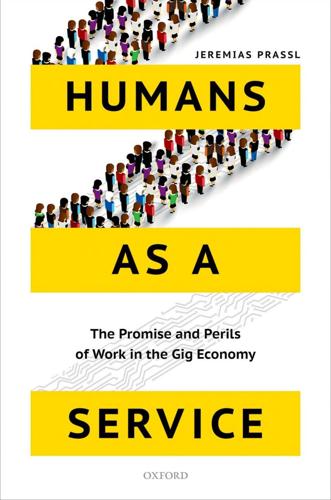
Humans as a Service: The Promise and Perils of Work in the Gig Economy
by
Jeremias Prassl
Published 7 May 2018
Brhmie Balaram, a senior researcher at the UK’s Royal Society of Arts, has challenged the picture of nimble start-ups seeking to compete against big business: ‘[A] small number of companies in the sharing economy are overtaking traditional industry giants’ to become entrenched monopolies themselves.26 In fact, it’s not even a question of David ventur- ing out to smite a lion or a bear: the modern version of the biblical tale would see David buying out the wild animals’ shares or assets rather than taking them on in open competition, as happened when ride service Lyft bought car-pooling operator Hitch and vehicle-servicing platform Cherry.27 The Goliaths need not worry any longer either, for similar reasons: on the rare occasion that a genuine clash looms, today’s combatants appear to prefer sharing their tents, eschewing head-on combat. Following a drawn- out battle that cost both companies billions of dollars in subsidized travel for passengers and drivers, Uber announced in August 2016 that it had sold its entire Chinese operation to competitor Didi Chuxing, in return for a stake of nearly 20 per cent in its erstwhile rival. The immediate result? Beijing passengers were quick to take to social media and complain of a near doubling of the cost of rides, as discount codes and other subsidies were swiftly withdrawn.28 * * * Keeping Regulators at Bay 39 Disruptive Innovation?
…
Ellen Huet, ‘Lyft buys carpooling startup Hitch to grow Lyft line’, Forbes (22 September 2014), http://www.forbes.com/sites/ellenhuet/2014/09/22/lyft- buys-carpooling-startup-hitch-to-grow-lyft-line/#5bb922452b59, archived at https://perma.cc/5H9D-Q44U; Lora Kolodny, ‘Zimride acquires Cherry but won’t offer car-washing service’, The Wall Street Journal (26 March 2013), http:// blogs.wsj.com/venturecapital/2013/03/26/zimride-acquires-cherry-but- wont-offer-car-washing-service/, archived at https://perma.cc/Z52R-B4K8 28. Leslie Hook and Charles Clover, ‘Uber abandons car-hailing app battle with China rival Didi Chuxing’, Financial Times (1 August 2016), http://www.ft. com/content/80125fd4-57a9-11e6-9f70-badea1b336d4, archived at https:// perma.cc/23YY-XG9J. Rather ironically, Didi, in turn, already owns stakes in several of Uber’s key competitors, including Lyft in the United States and Ola in India: Leslie Hook, ‘Uber makes a U-turn in China as subsidy war ends in Didi deal’, Financial Times (1 August 2016), http://www.ft.com/content/ 7f6e251a-5801-11e6-9f70-badea1b336d4, archived at https://perma.cc/2MYF- JJ3X; Ma Fangjing and Charles Clover, ‘Uber shares soar after Didi deal’, Financial Times (2 August 2016), http://www.ft.com/content/54217d94-5892- 11e6-8d05-4eaa66292c32, archived at https://perma.cc/E4LJ-86NX 29.

Reinventing Capitalism in the Age of Big Data
by
Viktor Mayer-Schönberger
and
Thomas Ramge
Published 27 Feb 2018
It’s what allowed the Internet to dominate the flow of digital information and what has driven the success of social media platforms from Facebook to WeChat to Twitter and Instagram. The network effect also enhances the value of market platforms—from eBay to Alibaba, to ride-hailing companies such as Uber and Didi Chuxing, and from Tinder to peer-lending pioneer Funding Circle—although the exact value a new participant adds depends not only on that person but also on the existing players in the market. For example, when a man joins an online dating platform for heterosexuals whose membership is 90 percent men, his usefulness is minimal.
…
See progressive data-sharing mandate dating websites, 49, 82–84, 163 decentralization, 7, 11, 13, 32, 90, 121 automation and, 80 bad decisions mitigated by, 38–39 of communicative coordination, 26 dyadic information exchange and, 72 firms and, 125, 127 matching and, 74, 127 decentralization with coordinated control, 101 decision-making automation overextension in, 116–120 centralized vs. decentralized (see centralization; decentralization) in firms, 95–107 irrational, 42–44 in markets, 42–44, 49, 161, 169–171 money and price simplification of, 49 delegation, 97–101, 106, 117, 218–219 Deloitte, 75, 126 Descartes, René, 223 Didi Chuxing, 163 digital Taylorism, 89 Distillers, 42 distributive policy measures, 186–187, 189, 190, 193, 197–200 See also taxes Doriot, Georges, 216 dotcom bubble, 6, 142–143 double-entry bookkeeping, 92–93 driving systems, autonomous, 78, 181–183, 213 Durant, William, 98 East India joint-stock companies, 93 eBay, 9, 69, 70, 75, 209, 215 decline in, 1–3 network effects and, 163 worth of goods traded on, 1 Economist, 89 education sector, 6–7, 199, 214 Ek, Daniel, 122–123 Embark, 182 Emergency Economic Stabilization Act of 2008, 134 Encyclopédie, 21 energy markets, 213 enterprise resource planning (ERP), 100 ESPN, 67, 69 eToro, 152 Europe, 135, 136, 164, 196, 198 European Parliament, 187 European Union, 140 evolution, 20–21, 22 Expedia, 70 Expertmaker, 70 externalities, 73, 74 Ezrachi, Ariel, 166 Facebook, 30, 148, 178, 196 feedback effects and, 169 market concentration in, 161 network effects and, 163, 166 fair value, 172–173 feedback effects, 78–80, 104, 157–179, 210, 211 development of theory, 159–160 government control via, 175–179 market concentration and, 161–169, 171 regulatory measures proposed for, 171–175 threat posed by, 166–167 Ferguson, Niall, 45 Ferrucci, David, 115 finance capital.

The Future Is Asian
by
Parag Khanna
Published 5 Feb 2019
Asians are learning and adapting as much or more from each other as from the West. The ride-sharing industry is emblematic of how Western companies are losing out to local rivals for both strategic and cultural reasons. As recently as 2015, it seemed as though Uber was taking over the world. But thanks to SoftBank’s consistent support for a suite of Asian car-sharing firms—Didi Chuxing (DiDi) in China, GrabShare in Southeast Asia, and Ola Cabs in India—Uber’s valuation dropped below that of DiDi, which bought Uber’s China operations (after which SoftBank bought Uber shares at a discount).28 In Russia, Uber was subsumed by Yandex.Drive; in Southeast Asia, Uber sold its operations to GrabShare, which took another $1 billion in investment from Toyota.
…
In South Korea, Hyundai and Kia have partnered with Cisco Systems and other US IT companies to advance connected car communications. Baidu’s open-source approach to driverless-car software development, called Apollo, has lured Intel, Daimler, and Ford to contribute resources. Baidu might be on a collision course with Didi Chuxing—or perhaps it will simply buy it. US firms are now copying Chinese innovations. LimeBike in California is copying China’s dockless bike sharing as pioneered by Ofo and MoBike. DiDi has algorithms that predict which ride-sharing users will want a ride at certain times and locations and is designing driverless car interiors for shared augmented-reality experiences—programs that Uber and others will surely copy.
…
Western, 357–58 Cold War, 2, 3, 6, 14, 19, 51–58, 86, 138, 283 colleges and universities, Asian: all-English programs in, 231 ethnic and cultural diversity in, 338 colleges and universities, European, Asian campuses of, 257 colleges and universities, US: Asian campuses of, 231–32 Asian enrollment in, 224–27 Asian studies departments in, 230 study-abroad programs in, 230–31 colonialism, 6, 22, 24, 27, 329 legacies of, 77–78 Columbus, Christopher, 43 commodities, trade in, 100, 111, 113, 160, 176, 322 China and, 21, 150, 157, 158, 273, 276–77 Russia and, 85, 88 Turkey and, 93, 94 Communist Party, Chinese, 49, 159–60, 300, 301 conflict, regional systems and, 11 Confucianism, 32, 34, 70, 300, 301 Congress, US, 195, 207, 222, 284 Asian Americans in, 221 Congressional Research Service (CRS), 293 Conrad, Sebastian, 28 Constantinople, 36, 39 sacking of, 43, 73, 91 consumerism, 23 corruption, 161, 267, 305 cosmetics industry, 346 Costa Rica, 274 Council of Europe, 57, 92, 241 coworking spaces, 204 Crazy Rich Asians (film), 347 Crimea, Russia’s annexation of, 83 Crimean War, 47 crusades, 39 Cuba, 271 Asian immigrants in, 275 cuisine, Asian: fusion, 345 global spread of, 343–45 Cultural Revolution, 56 culture, Asian, growing cross-border and global awareness of, 340–51 currency exchange rates, 169 Cyprus, 91 Cyrus the Great, Persian emperor, 30 Dalai Lama, 55, 120, 222, 358 Damico, Flávio, 277 Daoism, 31, 34 Darius I, Persian emperor, 30 Darius III, Persian emperor, 32 Defense Department, US, 98, 143 defense spending: in Asia, 17, 105, 137, 138 by Europe, 240, 248 Delhi Sultanate, 38–39 Demetrius, king of Bactria, 33 democracy, 15, 281–86 appeal of stability over ideals of, 285–86, 296, 309–13 Asian versions of, 21–22, 23, 281, 288–89 capitalism and, 352 failures and weaknesses of, 282–86, 294, 302–3 parliamentary, 295 Plato on, 286, 291 policy vs. politics in, 289, 296 populists’ hijacking of, 3 post–Cold War triumph of, 2 Singapore’s melding of technocracy and, 288–89, 290, 298 Deng Xiaoping, 57, 300 Dharma Bums (Kerouac), 331 Didi Chuxing (DiDi), 174–75, 198 digital integration, 186–89 digital technology: Asia and, 324 in governance, 318–20 Djibouti, 263 DNA editing, 201 Doha, art scene in, 342 dollar reserves, Asian holdings of, 163 Dream of the Red Chamber, 353 drones, commercial, 209 drug trade, 106–7 Duara, Prasenjit, 358 Dubai, 172, 173, 202, 212, 251, 261, 334 Dubai Ports World, 104, 261, 263 Durban, 265 Durov, Pavel, 173 Dutch, Southeast Asian colonies of, 45 Duterte, Rodrigo, 123–24, 305, 340 illiberal policies of, 306 Dyson, 210, 257 East Asia, 6, 51, 70, 140 cross-border literary tradition of, 353 democratization of, 61 economic growth of, 9 economic stability of, 63 exports of, 153, 154 Gulf states investments in, 103–4 oil and gas imports of, 82–83, 84–85, 106, 152, 175 in post–Cold War era, 60–61 prehistoric civilizations in, 29 US and, 140–41 US presence in, 16, 73 see also specific countries East Asian Community (EAC), 9 eco-activism, 182 e-commerce, 210–11, 228 Economic Cooperation Organization (ECO), 58 economic growth, 3, 4 rule of law and, 309–10 economy, global, 321–22 eco-tourism, 340 Ecuador, 274 education and professional training, 204–5, 317 Egypt, 29, 262 Eilat, 99 election, US, of 2016, 83, 320 electricity transmission systems, 112 electric vehicles, 179 energy: Asian need for, 9, 17, 62, 82–83, 84–85, 96, 100, 102, 103, 106, 152, 175–80, 177, 207 Europe’s need for, 84 Enlightenment, 22 Erdoğan, Recep, 87, 91, 92, 222, 310 Ethiopia, 262 eugenics, 200–201 Eurasia, 81 Eurasian Economic Union (EEU), 85, 87 Europe: alternative energy in, 175 anti-Muslim movements in, 255 anti-Soviet revolutions in, 58 Arabs in, 253, 255, 258 Asians in, 253–58 austerity policies in, 299 China and, 243, 246, 248–50 as coherent regional system, 7 defense spending by, 240, 248 energy needs of, 84 global civilization as influenced by, 21, 22–23 governance systems in, 284 internal trade in, 152 postwar rebuilding of, 14 Russia and, 83–84, 85, 89 Syrian refugees in, 63 US financial holdings of, 164–65 US relations with, 240 in voyages of discovery, 43–44, 68 see also specific countries Europe, Asia and, 239–58 arms sales in, 251 Asian investment in, 163, 246–47 financial sector in, 246, 247 food transport and, 244, 248 free trade agreements in, 250 infrastructure connectivity and, 243–44 retail sector in, 244 tourism in, 254–55 trade in, 13, 14, 241, 250 urban development and, 245–46 European Bank for Reconstruction and Development (EBRD), 241 European Central Bank, 243 European Coal and Steel Community, 7 European Customs Union, 92 European Economic Community, 57 European Investment Bank (EIB), 250 European Union, 2, 11, 13, 14, 127, 133, 249 expansion of, 241, 258 Israel and, 97 execution rates, in Asia, 308 Export-Import Bank of China, 84–85, 110, 273 Facebook, 208, 209, 219, 320 family-run businesses, Asian, 159–60 Far East, use of term, 5–6 Far Eastern Economic Review, 353 fashion: Asian, spread of, 345–46 Asian models in, 346 European, Asianization of, 345–46 Filipino Americans, 217 film industry: in Asia, 347–51 Asian directors in, 347 cross-Asian collaborations in, 348–49 Hollywood’s use of Asian themes in, 346–47 US-Asian collaboration in, 348 finance industry, Asian, 163 bonds in, 163, 164, 165–67 commodities markets in, 176 cross-border investments in, 166 foreign investments in, 167, 168, 171–72 IPO’s in, 167 private equity in, 171–72 privatization and, 169–71 stock markets in, 167–68 US and European investments by, 163–64 venture capital in, 173–74 finance industry, US, 166 Asia and, 167 financial crises: Asian (1997–98), 61, 62, 121, 151 Western (2007–08), 3, 14, 17, 62, 147, 152, 164, 233, 299 fintech (financial technology), 158, 168, 169, 188, 213 Flanagan, Owen, 357 flashpoints, geopolitical, in Asia, 11 food: Asian demands for, 244, 248 Asian production of, 177, 180–81, 182 Foreign Affairs, 8 Fosun International, 159–60 Foxconn, 132, 153, 194, 228 France: Arab immigrants in, 253 Asian immigrants in, 253 Asian trade of, 244 Indochina colonized by, 45 and loss of Indochina, 52 West Asian mandates of, 49 Francis I, Pope, 358 Franco-Prussian War, 286 Freedom House, 308 free trade: Asia and, 8, 102, 124, 129, 133, 153, 154, 158, 223, 250, 252, 272, 273 Western promotion of, 2–3, 158 Fujimori, Alberto, 276 Fukuoka, 135–36 Funabashi, Yoichi, 8–9 Funan Kingdom, 34 Fung, Spencer, 184 Future Forward Party, Thailand, 307 Gama, Vasco da, 43 Gandhara, 32, 33, 34 Gandhi, Mohandas K., 49, 265, 316 Ganges region, 29, 32 Ganges River, 33, 35, 46 “Gangnam Style” (music video), 343 Gates, Bill, 317 Geely, 194 General Electric, 110, 168, 211 Genghis Khan, 39–40 Georgia, Republic of, 59 technocracy in, 307 Germany, Nazi, 50 Germany, unified: Arab refugees in, 255 Asian immigrants in, 253, 254, 256 Asia’s relations with, 242 multiparty consensus in, 284 Ginsberg, Allen, 331 Giving Pledge, 317 Global-is-Asian, 22 globalization: Asia and, 8–9, 162, 357–59; see also Asianization growth of, 14 global order, see world order Goa, 44, 89, 186 Göbekli Tepe, 28 Goguryeo Kingdom, 34 Go-Jek, 187 Golden Triangle, 123 Google, 199, 200, 208–9, 219 Gorbachev, Mikhail, 58 governance: digital technology in, 318–19 inclusive policies in, 303 governance, global: Asia and, 321–25 infrastructure and, 322 US and, 321 government: effectiveness of, 303 trust in, 291, 310 violence against minorities by, 308–9 Government Accountability Office (GAO), 293 GrabShare, 174–75 grain imports, Asian, 90 Grand Canal, China, 37, 42 Grand Trunk Road, 33 Great Britain: Asian investments in, 247 Brexit vote in, 283–84, 286, 293–94 civil service in, 293–94 colonial empire of, 46–47 industrialization in, 46 Iran and, 252 populism in, 283–84 South Asian immigrants in, 253, 254 West Asian mandates of, 49–50 Great Game, 47 Great Leap Forward, 55 Great Wall of China, 31 Greece, 60, 91, 248 Greeks, ancient, 29, 34 greenhouse gas emissions, 176–77, 182 gross domestic product (GDP), 2, 4, 150 Grupo Bimbo, 272 Guam, 50, 136 Guangdong, 42, 98 Guangzhou (Canton), 37, 48, 68 Gulf Cooperation Council (GCC), 58, 101, 102 Gulf states (Khaleej), 6, 9, 57, 62, 81 alternative energy projects in, 251 Asianization of, 100–106 China and, 101, 102 European investment in, 251 India and, 102 Israel and, 99–100, 105 Japan and, 102 oil and gas exports of, 62, 74, 100–101, 176 South Asian migrants in, 334 Southeast Asia’s trade with, 102 South Korea and, 102 technocracy in, 311–12 US arms sales to, 101 women in, 315 see also specific countries Gulliver, Stuart, 148, 150 Gupta Empire, 35 H-1B visas, 219 Hamas, 59, 100, 139 Hamid, Mohsin, 184 Han Dynasty, 32, 33, 34, 300 Hanoi, 180 Han people, 31–32, 37, 69 Harappa, 29 Hardy, Alfredo Toro, 275 Hariri, Saad, 95 Harun al-Rashid, Caliph, 37 Harvard University, 230 Haushofer, Karl, 1 health care, 201–2 Helmand River, 107 Herberg-Rothe, Andreas, 75 Herodotus, 30 heroin, 106–7 Hezbollah, 58, 95, 96, 106 Hindus, Hinduism, 29, 31, 32, 34, 38, 70–71 in Southeast Asia, 121 in US, 220, 221 Hiroshima, atomic bombing of, 51 Hispanic Americans, 217 history, Asian view of, 75 history textbooks: Asia nationalism in, 27–28 global processes downplayed in, 28 Western focus of, 27–28, 67–68 Hitler, Adolf, 50 Ho, Peter, 289 Ho Chi Minh, 52 Ho Chi Minh City, 56 Honda, 275 Hong Kong, 56, 74 American expats in, 234 art scene in, 342 British handover of, 60, 141 civil society in, 313 Hongwu, Ming emperor, 42 honor killings, 315 Hormuz, Strait of, 103, 106 hospitality industry, 190, 214 Houthis, 106, 107 Huan, Han emperor, 33–34 Hulagu Khan, 40 Human Rights Watch, 313 human trafficking, 318 Hunayn ibn Ishaq, 37 Hungary, 40, 248, 256 Huns, 35, 76 hunter-gatherers, 28 Huntington, Samuel, 15 Hu Shih, 332 Hussein, Saddam, 58, 62, 101 Hyundai, 104 IBM, 212 I Ching, 30 Inclusive Development Index (IDI), 150 income inequality: in Asia, 183–84 in US, 228, 285 India, 101, 104 Afghanistan and, 118 Africa and, 264–66 AI research in, 200 alternative energy programs in, 178–79, 322 Asian investments of, 118 Australia and, 128 British Raj in, 46, 49 charitable giving in, 316–17 China and, 19–20, 113, 117–18, 155, 156, 332 civil society in, 313 in Cold War era, 52, 55, 56 corporate debt in, 170 corruption in, 161, 305 demonetization in, 184, 186–87 diaspora of, 333–34 early history of, 29, 30–31 economic growth of, 9, 17, 148, 185–86 elections in, 63 European trade partnerships with, 250–51 expansionist period in, 38, 41–42 failure of democracy in, 302 family-owned businesses in, 160 film industry in, 349–51 financial markets in, 186 foreign investment in, 192 gender imbalance in, 315 global governance in, 322–23 global image of, 331–32 Gulf states and, 102 inclusive policies in, 304 infrastructure investment in, 63, 110, 185 Iran and, 116, 118 Israel and, 98–99 IT industry in, 204, 275 Japan and, 134, 156 Latin America and, 275 manufacturing in, 192 as market for Western products and services, 207 naval forces of, 105 Northeast Asia and, 154–55 oil and gas imports of, 96, 107–8, 176 Pakistan and, 53, 55, 61, 77–78, 117–18 partitioning of, 52–53 pharmaceutical industry in, 228, 275 population of, 15, 186 in post–Cold War era, 61, 62 privatization in, 170 returnees in, 226 Russia and, 86–87 service industry in, 192 Southeast Asia and, 154–55 special economic zones in, 185 spiritual heritage of, 332 technocracy in, 304–6 technological innovation in, 186–87 territorial claims of, 11 top-down economic reform in, 305 traditional medicine of, 355 West Asia and, 155 Indian Americans, 217, 218, 219–20, 222 Indian Institutes of Technology (ITT), 205 Indian Ocean, 38, 47, 74, 105, 261, 262, 266 European voyages to, 44 Indians, in Latin America, 276 IndiaStack, 187 Indochina, 45, 50, 52 see also Southeast Asia Indo-Islamic culture, 38 Indonesia, 53, 61, 121, 125, 182 art scene in, 342 in Cold War era, 54 economic growth of, 17, 148 eco-tourism in, 340 failure of democracy in, 302 foreign investment in, 187 illiberal policies of, 306 inclusive policies of, 304 Muslims in, 71 technocracy in, 304–5 Indus River, 32, 113 Industrial and Commercial Bank of China (ICBC), 92, 159 industrialization, spread of, 22 Industrial Revolution, 2, 46, 68 Indus Valley, 29 infrastructure investment, in Asia, 6, 62, 63, 85, 88, 93, 96, 104, 108, 109, 110–11, 185, 190, 191, 243–44 see also; Asian Infrastructure Investment Bank; Belt and Road Initiative Institut d’Études Politiques de Paris (Sciences Po), 257, 286–87 insurance industry, 210 intermarriage, 336, 337–38 International Monetary Fund (IMF), 162, 163, 166, 323 International North-South Transport Corridor (INSTC), 116 International Renewable Energy Agency (IRENA), 100 International Systems in World History (Buzan), 7 Internet of Things (IoT), 134, 136, 197 Interpol, 324 Iran, 11, 15, 62, 92, 95, 98, 101, 140 China and, 101, 106–7, 116 in Cold War era, 54 European trade with, 251–52 growing opposition to theocracy in, 312 India and, 116, 118 Islamic revolution in, 57 Israel and, 99, 100 nuclear program of, 62 oil and gas exports of, 50, 94, 106, 107–8, 118, 176 in post–Cold War era, 58–59 privatization in, 170 re-Asianization of, 81, 106 Russia and, 87 Saudi Arabia and, 95–96, 100, 105–6 Syria and, 106 tourism in, 252 Turkey and, 94 US sanctions on, 87, 107, 241, 251, 252 women in, 315 Yemen and, 107 Iran-Iraq War, 58, 106 Iraq, 9, 11, 16, 49 Kuwait invaded by, 59 oil exports of, 55, 96 Sunni-Shi’a conflict in, 312 Iraq Reconstruction Conference (2018), 96 Iraq War, 3, 62, 91, 217, 240 Isfahan, 41 Islam, 40, 316 politics and, 71–72 spread of, 36, 38–39, 43, 69–72, 74 Sunni-Shi’a conflict in, 95, 312 Sunni-Shi’a division in, 36 see also Muslims; specific countries Islamic radicalism, 58, 59, 62, 65, 68, 71, 72, 115, 117, 139 see also terrorism Islamic State in Iraq and Syria (ISIS), 63, 71, 94, 96, 117 Israel, 11, 54, 96 arms sales of, 98 China and, 98–99 desalinzation technology of, 181 EU and, 97 Gulf states and, 99–100, 105 India and, 98–99 Iran and, 99, 100 Russia and, 88 see also Arab-Israeli conflict; Palestinian-Israeli conflict Japan, 14, 16, 63, 68, 69, 73 Africa and, 265 Allied occupation in, 51 alternative energy technologies in, 322 Asian investments of, 118, 156 Asianization of, 81 Asian migrants in, 336–37 Asian trade with, 273 capitalism in, 159 cashless economy in, 189 China and, 19–20, 77, 134, 136–37, 140–42 in Cold War era, 5, 55 corporate culture of, 132 early history of, 29, 31, 34–35 economic growth of, 55, 132, 148, 158, 163 economic problems of, 132, 134–35 in era of European imperialism, 47–48 EU trade agreement with, 133 expansionist period in, 38, 42, 44 foreign investment in, 135 in global economy, 133–37 global governance and, 322–23 global image of, 331 Gulf states and, 102 immigration in, 135–36 India and, 134, 156 infrastructure investment in, 110 Latin America and, 275 precision industries in, 134, 135–36 robotic technology in, 134 Russia and, 82, 86–87 Southeast Asia and, 133, 153–54, 156 South Korea and, 141–42 technological innovation in, 134, 196, 197 territorial claims of, 11 tourism in, 135 US and, 136 in World War I, 49 in World War II, 50–51 Japan International Cooperation Agency (JICA), 265 Japan-Mexico Economic Partnership Agreement, 273 Java, 35, 38, 39, 45 Javid, Sajid, 254 Jericho, 28 Jerusalem, 54, 98 Jesus Christ, 35 jihad, 38 Jinnah, Muhammad Ali, 52 Jobs, Steve, 331 Joko Widodo (Jokowi), 305, 306, 320 Jollibee, 172 Jordan, 54, 62, 97, 99 Syrian refugees in, 63 Journal of Asian Studies, 352 Journey to the West, 353 Judaism, 36 Kagame, Paul, 268 Kanishka, Kush emperor, 35 Kapur, Devesh, 218 Karachi, 113 Karakoram Highway, 113 Kashmir, 53, 55, 61, 77–78, 117–18, 119 Kazakhstan, 59, 140, 207 China and, 20, 108 economic diversification in, 190 energy investment in, 112 as hub of new Silk Road, 111–12 Kenya, 262, 263 Kerouac, Jack, 331 Khaleej, see Gulf states Khmer Empire, 70 Khmer people, 34, 38, 239 Khmer Rouge, 56 Khomeini, Ayatollah, 57, 59 Khorgas, 108 Khrushchev, Nikita, 56 Khwarizmi, Muhammad al-, 37 Kiev, 40 Kim Il Sung, 55 Kim Jong-un, 142 Kish, 28 Kissinger, Henry, 357 Koran, 316 Korea, 11, 31, 51, 68, 69 early history of, 34 expansionist period in, 38 Japanese annexation of, 48 reunification of, 142–43 see also North Korea; South Korea Korea Investment Corporation, 164 Korean Americans, 217 Korean War, 51 Kosygin, Alexei, 56 K-pop, 343 Kuala Lampur, 121, 246 Kublai Khan, 40 Kurds, Kurdistan, 87, 94, 99, 256 Kushan Empire, 32, 35 Kuwait, 101 Iraqi invasion of, 59 Kyrgyzstan, 59, 108, 182 language, Asian links in, 68–69 Laos, 45, 52, 60, 122, 154 Latin America: Asian immigrants in, 275–76 Asian investment in, 273–75, 276–77 Indian cultural exports to, 350 trade partnerships in, 272–73, 274, 275 US and, 271–72 Lebanon, 49, 54, 58, 95, 106 Syrian refugees in, 63 Lee, Ang, 347 Lee, Calvin Cheng Ern, 131 Lee Hsien Loong, 296–97 Lee Kuan Yew, 56, 127, 268, 288, 289, 292–93, 299, 305 voluntary retirement of, 296 Lee Kuan Yew School of Public Policy, 22, 299 Lenin, Vladimir, 49, 89 Levant (Mashriq), 81, 95, 97 LG, 275 Li & Fung, 184–85 Liang Qichao, 48–49 Liberalism Discovered (Chua), 297 Lien, Laurence, 317 life expectancies, 201 literature, Asian, global acclaim for, 353–54 Liu, Jean, 175 Liu Xiaobo, 249 logistics industry, 243 Ma, Jack, 85–86, 160, 189 Macao (Macau), 44 MacArthur, Douglas, 51 McCain, John, 285 McKinsey & Company, 160, 213 Macquarie Group, 131 Maddison, Angus, 2 Made in Africa Initiative, 262 Magadha Kingdom, 31 Magellan, Ferdinand, 43 Mahabharata, 35 Mahbubani, Kishore, 3 Mahmud of Ghazni, Abbasid sultan, 38 Malacca, 38, 43, 44, 124 Malacca, Strait of, 37, 39, 102, 103, 118, 125 Malaya, 46, 50 Malay Peninsula, 39, 53 Malaysia, 53, 61, 188 Asian foreign labor in, 335 China and, 123, 124 in Cold War era, 54 economic diversification in, 190 economic growth of, 17 technocracy in, 308 Maldives, 105 Malesky, Edmund, 308 Manchuria, 38, 48, 50, 51 Mandarin language, 229–30, 257 Manila, 121, 245 Spanish colonization of, 44 Mansur, al-, Caliph, 37 manufacturing, in Asia, 192 Mao Zedong, 51–52, 55, 56, 261, 300, 301 Marawi, 71 Marcos, Ferdinand, 53–54, 61 martial arts, mixed (MMA), 340–41 Mashriq (Levant), 81, 95, 97 Mauritius, 268 Mauryan Empire, 32–33, 68 May, Theresa, 293 Mecca, 57 media, in Asia, 314 median ages, in Asia, 148, 149, 155 Median people, 29 Mediterranean region, 1, 6, 29, 30, 33, 68, 84, 92, 95, 99, 106 see also Mashriq Mehta, Zubin, 332 Mekong River, 122 Menander, Indo-Greek king, 33 mergers and acquisitions, 212–13 meritocracy, 294, 301 Merkel, Angela, 242, 254 Mesopotamia, 28 Mexico, 7 Asian economic ties to, 272, 273, 274, 277 Microsoft, 208 middle class, Asian, growth of, 3, 4 Mihov, Ilian, 309 mindfulness, 332 Ming Dynasty, 42–43, 44, 69, 73, 75, 76, 105, 137, 262 mobile phones, 157, 183–84, 187, 188, 189, 193, 199, 208–9, 211 Modi, Narendra, 63, 98, 117, 119, 154–55, 161, 180, 185, 222, 265, 305, 306, 307, 320 Mohammad Reza Pahlavi, Shah of Iran, 54 Mohammed bin Salman, crown prince of Saudi Arabia, 72, 247, 310, 312, 315 Mohenjo-Daro, 29 Moluku, 45 MoneyGram, 196 Mongolia, 92, 111–12 alternative energy programs in, 112, 182 technocracy in, 307 Mongols, Mongol Empire, 39–40, 42, 44, 68, 69, 73, 76, 77, 239 religious and cultural inclusiveness of, 40, 70–71 Monroe Doctrine, 271 Moon Jae-in, 142 Moscow, 81, 82 Mossadegh, Mohammad, 54 MSCI World Index, 166, 168 Mubadala Investment Company, 88, 103, 104 Mughal Empire, 41–42, 46 religious tolerance in, 70–71 Muhammad, Prophet, 36 Mumbai, 185–86 Munich Security Conference, 241 Murakami, Haruki, 354 Murasaki Shikibu, 353 music scene, in Asia, 343 Muslim Brotherhood, 59 Muslims, 70–72 in Southeast Asia, 38–39, 43, 70–71, 121 in US, 220 see also Islam; specific countries Myanmar, 60, 63, 161 Asian investment in, 118–19 charitable giving in, 316 failure of democracy in, 302 financial reform in, 184 Rohingya genocide in, 122–23 see also Burma Nagasaki, atomic bombing of, 51 Nanjing, 42, 49 Napoleon I, emperor of the French, 1 nationalism, 11, 20, 22, 49–50, 52–55, 77, 118, 137, 138–39, 222, 312, 329, 337, 352 Natufian people, 28 natural gas, see oil and gas natural gas production, 175–76 Nazism, 200 Nehru, Jawaharlal, 52, 55 Neolithic Revolution, 28 neomercantilism, 20, 22, 158 Nepal, 46, 119–20, 333 Nestorian Christianity, 36, 70 Netanyahu, Benjamin, 97, 98, 100 Netflix, 348 New Deal, 287 New Delhi, 245 Ng, Andrew, 199 NGOs, 313 Nigeria, 265 Nisbett, Richard, 357 Nixon, Richard, 56, 101 Nobel Prize, 48, 221, 249, 323, 353–54 nomadic cultures, 76 Non-Aligned Movement, 55 Non-Proliferation of Nuclear Weapons Treaty, 61 North America: Asian trade with, 13, 14, 207 as coherent regional system, 7 energy self-sufficiency of, 175, 272 internal trade in, 152 see also Canada; Mexico; United States North American Free Trade Agreement (NAFTA), 7 North Atlantic Treaty Organization (NATO), 2, 57, 92, 116 Northeast Asia, 141 India and, 154–55 internal trade in, 152 manufacturing in, 153 North Korea, 55, 61 aggressiveness of, 63 China and, 143 cyber surveillance by, 142 nuclear and chemical weapons program of, 142 Russia and, 143 South Korea and, 142 US and, 142–43 Obama, Barack, 18, 82, 229, 240 oil and gas: Asian imports of, 9, 62, 82–83, 84–85, 96, 102, 106, 107–8, 152, 175, 176, 207 Gulf states’ exports of, 62, 74, 100–103, 176 Iranian exports of, 50, 94, 106, 107–8, 118, 176 Iraqi exports of, 55, 96 OPEC embargo on, 57 price of, 61 Russian exports of, 82–83, 84, 87–88, 175, 176 Saudi exports of, 58, 87–88, 102, 103 US exports of, 16, 207 West Asian exports of, 9, 23, 57, 62, 152 Okakura Tenshin, 48 oligarchies, 294–95 Olympic Games, 245 Oman, East Asia and, 104 ONE Championship (MMA series), 341 OPEC (Organization of Petroleum Exporting Countries), 57 Operation Mekong (film), 123 opium, 47, 123 Organization for Security and Co-operation in Europe (OSCE), 241 Oslo Accords, 59 Osman I, Ottoman Sultan, 41 Ottoman Empire, 40–41, 43, 45, 46–47, 48, 73, 91 partitioning of, 49–50 religious tolerance in, 70–71 Out of Eden Walk, 4 Overseas Private Investment Company (OPEC), 111 Pacific Alliance, 272 Pacific Islands, 181–82 US territories in, 48 Pacific Rim, see East Asia Pakistan, 52–53, 58, 62, 72, 95, 102, 105 AI research in, 200 Asianization of, 81, 113–18 as Central Asia’s conduit to Arabian Sea, 113–14 China and, 20, 114–16, 117–18 corruption in, 161 failure of democracy in, 302 finance industry in, 168–69 foreign investment in, 115 GDP per capita in, 184 India and, 55, 61–62, 117–18 intra-Asian migration from, 334 logistics industry in, 185 as market for Western products and services, 207 US and, 114–15 Pakistan Tehreek-e-Insaf (PTI), 307 Palestine, Palestinians, 49, 54, 99 Palestine Liberation Organization (PLO), 59 Palestinian-Israeli conflict, 59, 62, 97, 100 Pan-Asianism, 48, 351–52 paper, invention of, 72 Paris climate agreement, 178, 240 Paris Peace Conference (1918), 49 Park Chung-hee, 56 Park Geun-hye, 313 parliamentary democracy, 295 Parthians, 33, 76 Pawar, Rajendra, 205 Pearl Harbor, Japanese attack on, 50 peer-to-peer (P2P) lending, 169 People’s Action Party (PAP), Singapore, 294 People’s Bank of China (PBOC), 110, 188 Pepper (robot), 134 per capita income, 5, 150, 183, 186 Persia, Persian Empire, 29, 30, 42, 45, 47, 50, 68, 75 see also Iran Persian Gulf War, 61, 101, 217 Peru: Asian immigrants in, 275, 276 Asian trade with, 272 Peshawar, 32 Peter I, Tsar of Russia, 45, 90 pharmaceutical companies, 209–10 Philippines, 61, 157, 165 alternative energy programs in, 180 Asian migrants in, 333 China and, 123–24 Christianity in, 74 in Cold War era, 53–54 eco-tourism in, 340 foreign investment in, 124 illiberal policies of, 306 inclusive policies in, 304 as market for Western products and services, 207 Muslims in, 71 privatization in, 170 technocracy in, 304–5 urban development in, 190 US acquisition of, 48 US and, 123–24 philosophy, Asian vs.

Road to Nowhere: What Silicon Valley Gets Wrong About the Future of Transportation
by
Paris Marx
Published 4 Jul 2022
In 2016, after launching its ride-hailing service in cities around the world and announcing its intention to automate its drivers, Uber was on the lookout for new ways to appear to be on the cutting edge of future transportation. It was losing vast sums of money and had to pull out of China, selling its operations to Chinese ride-hailing giant Didi Chuxing. The company needed a new distraction from the growing issues with its core business, and it turned to eVTOLs. In October of that year, its Uber Elevate division released a white paper laying out its vision of the future of on-demand urban air transportation. After allowing users to hail a car and driver, the Uber Air service would allow them to hail a flying car in some cities by 2023.
…
See Interstate Highway System Convention and Visitors Authority, 148 copper mines, 79, 80 counterculture, 41–2, 44 Covid-19 air pollution and, 231 autonomous delivery companies and, 173 rapid delivery services during, 192 “creative class” theory, 200 CVS, 172–3 cyberoptimists, 56 Cybertruck (Tesla), 84, 188, 189 DARPA, 45–6, 120 DARPA Strategic Computing Initiative, 119 Daub, Adrian, 59 deaths pedestrian, 16–7, 31–2 from road traffic crashes, 30–2 The Death and Life of Great American Cities (Jacobs), 26–7 de Bortoli, Anne, 169–70 “A Declaration of the Independence of Cyberspace” (Barlow), 52–3 defense spending, 38–9, 45–6 deindustrialization, 199 Delaney, Matt, 173 Delanoë, Bertrand, 210, 211 delivery companies, autonomous, 173, 177–9, 192–3 Dell, 72 Democratic Republic of Congo (DRC), 72–3 Department of Transportation (DOT), 119–20 Detroit, MI Detroit Economic Club, 138 superhighway plan, 22 Detroit Economic Club, 138 Dickmanns, Ernst, 119 Didi Chuxing, 152 digital redlining, 195 Do Androids Dream of Electric Cars? (Wilt), 217 dockless scooters. See bicycles Domino’s Pizza, 172–3 DoorDash, 111, 172 dot-com crash, 57 double-decker highways, 151 Dubal, Veena, 101, 112 Duhigg, Charles, 121–3 Duranton, Gilles, 141–2 Dynamex decision, 111 Eastman Kodak, 40 ecommerce, 181, 193 economies of scale, 106 EHang, 152 Eisenhower, Dwight D., 23, 39 Electric Vehicle and Central Station Association, 66–7 Electric Vehicle Company (EVC), 65–8 electric vehicles batteries in, 72–5, 78–80 cobalt and, 72–3 commodities boom from, 87 electric personal vehicles, 188 Electric Vehicle Company (EVC), 65–8 environmental documentaries and, 68–71 mining industry and, 72–7, 79 resurgence of, 85–6 sales in Norway, 81–2 Tesla (See Tesla) uptick in sales of, 66–7 Electronic Frontier Foundation (EFF), 52–3 Elysium (film), 190 Emergency Highway Energy Conservation Act (1974), 203 Enfield Automotive, 68 Engelbart, Douglas, 54–5 entrepreneurial governance model, 200–1 Erlich, Justin, 156–7 e-scooters.

Insane Mode: How Elon Musk's Tesla Sparked an Electric Revolution to End the Age of Oil
by
Hamish McKenzie
Published 30 Sep 2017
Others, like Cruise Automation (which GM acquired for $1 billion) and Comma.ai, which offers open-source autonomous driving technology in the same vein as Google’s Android mobile operating system, are chasing hard. Baidu, China’s leading Internet search company, has an autonomous-driving research center in Sunnyvale. Byton—backed by China’s Tencent, Foxconn, and the China Harmony New Energy auto retailer group—has an office in Mountain View, as does Didi Chuxing, the Chinese ride-sharing company in which Apple invested $1 billion. Many of these companies have taken not just inspiration but also talent from Tesla. Part of the value of an innovation cluster like Silicon Valley lies in the dispersal of intellectual labor from one node to the next. For instance, PayPal is well known in the Valley for producing a number of high performers who left the company to start, join, or invest in others.
…
For the last century, Wu said, the auto industry had been like boxing, dominated by big guys who followed well-defined rules. But now, it was like mixed martial arts, which favors scrappy, nimble fighters, even if they’re smaller. “The rules become very complicated—or people don’t follow rules.” Meanwhile, ride-sharing had become popular, led in China by Didi Chuxing. Connectivity provided an opportunity to make cars more like mobile phones. And the idea of autonomous driving was gaining momentum, with Baidu, China’s largest online search company, working on its own vehicle since 2013, following Google’s lead. I started to get a little nauseous. It wasn’t only because I was focusing my attention on Wu instead of the road but also because the driver, like many in China, was unkind to the brakes.
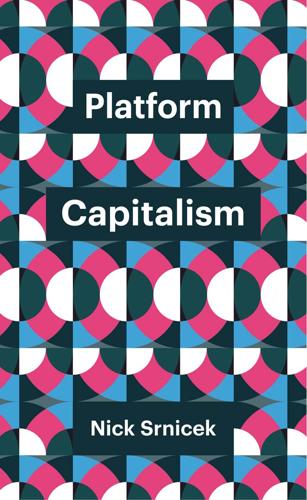
Platform Capitalism
by
Nick Srnicek
Published 22 Dec 2016
But it is worth taking a moment to put the funding of lean platforms in context. When we look at the lean platforms for on-demand mobile services, we are primarily discussing Uber. In terms of funding, in 2014 Uber outpaced all the other service companies, taken together, by 39 per cent.85 In 2015 Uber, Airbnb, and Uber’s Chinese competitor, Didi Chuxing, combined to take 59 per cent of all the funding for on-demand start-ups.86 And, while the enthusiasm for new tech start-ups has reached a fever pitch, funding in 2015 ($59 billion) still paled in comparison to the highs of 2000 (nearly $100 billion).87 Where is the money coming from? Broadly speaking, it is surplus capital seeking higher rates of return in a low interest rate environment.
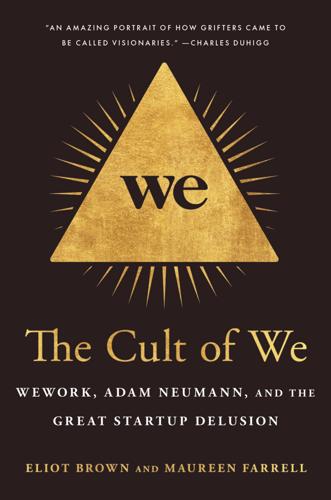
The Cult of We: WeWork, Adam Neumann, and the Great Startup Delusion
by
Eliot Brown
and
Maureen Farrell
Published 19 Jul 2021
Soon after, the group retreated to Son’s main dining room, the size of a typical midtown Manhattan restaurant, except there were only a handful of tables. The views of Tokyo through the nearly floor-to-ceiling windows combined with the minimalist space gave attendees the sensation they were floating over the city. Rather than have a private celebratory lunch, Son wanted Neumann to meet someone: he brought along Cheng Wei, the CEO of Didi Chuxing. Didi was China’s main ride-hailing company—one that engaged in a bloody territory battle with Uber for China, eventually emerging victorious, causing Uber to sell its operations in the country to Didi. Wei was one of the biggest beneficiaries of Son’s investing largesse. He had already received numerous rounds of funding and was in the middle of conversations with Son about putting $6 billion more into the company.
…
the cash-out marked: Eliot Brown, Maureen Farrell, and Anupreeta Das, “WeWork Co-founder Has Cashed Out at Least $700 Million via Sales, Loans,” Wall Street Journal, July 18, 2019. when she arrived for the signing: Jen Berrent, “Welcome Home to WeWork,” WeWork website, June 18, 2018. causing Uber to sell its operations: Alyssa Abkowitz and Rick Carew, “Uber Sells China Operations to Didi Chuxing,” Wall Street Journal, Aug. 1, 2016. $6 billion more into the company: Mayumi Negishi, “SoftBank Considers $6 Billion Investment in China Ride-Hailing Firm Didi,” Wall Street Journal, May 12, 2017. “In a fight, who wins?”: Bertoni, “WeWork’s $20 Billion Office Party.” CHAPTER 19: REVENUE, MULTIPLE, VALUATION the entire San Francisco public school system: San Francisco Board of Education, “SF Board of Education Approves Budget for 2016–17,” press release, June 29, 2016.
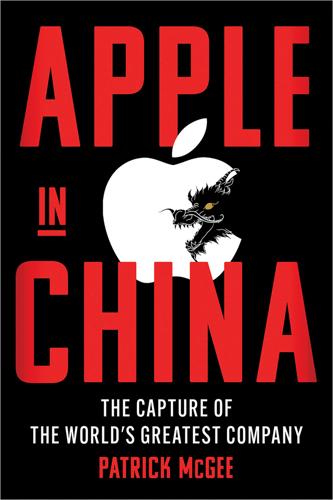
Apple in China: The Capture of the World's Greatest Company
by
Patrick McGee
Published 13 May 2025
They all get to step up and create a massive market where none previously existed.” CHAPTER 32 BUREAUCRATIC PROTECTION Jean Liu’s meeting in Cupertino was already shaping up to be the most important of her career when, just days before in April 2016, China’s regulators shut down Apple’s iTunes and iBooks stores. For Liu, the thirty-seven-year-old president of Didi Chuxing, a ride-hailing start-up, the abrupt move made for impeccable timing. Didi was spending truckloads of money in a battle for supremacy with Uber, and the cash burn was only going to get worse if Didi opted to invest in autonomous driving technology. Liu needed some financial help. But more than that; she wanted Apple’s endorsement.
…
-China trade war and, 280, 343–44, 347 China Central Television (CCTV), 293–94, 344 Consumer Day episode on, 1–5, 230–31, 238, 241–42, 250, 260, 264, 362 China Daily, 202, 327, 328 China Integrated Circuit Industry Investment Fund, 356 China Labor Watch, 303, 305, 308, 311–12 China Mobile, 263, 334 China Telecom, 263 China Unicom, 192, 198, 334 Chinese Academy of Sciences, 292 Chinese Communist Party (CCP), 9, 76, 86, 87, 202, 206, 209, 215–16, 231, 235–37, 243, 253–58, 259, 262, 264, 278, 281, 286, 291, 293, 299, 309, 325, 359, 360, 373, 383 COVID lockdowns and, 359 Olympics and, 183 20th Congress of, 357 YMTC and, 356 Chinese New Year, 194, 219–20, 319, 350 CHIPS and Science Act, 7, 376 Chip War (Miller), 373 Chongqing, 197 circuit boards, 23–24, 26, 63, 111 Cisco, 107, 265 Civil War, American, 216 Clinton, Bill, 240 cloud computing, 42, 298, 299 CNC machines, 174–75 Code, The (O’Mara), 344 Cohan, William D., 382 Collins, David, 327 Compaq, 19, 21, 38, 77, 93, 94, 99, 100, 106, 107, 110 CompUSA, 182, 185 Conroy, Donal, 333 Consumer Day episode on CCTV, 1–5, 230–31, 238, 241–42, 250, 260, 264, 362 Consumer Electronics Show, 124 contract manufacturing, 24–25, 110–12, 145, 170, 173 Cook, Tim, 3, 6, 8, 9, 11, 66, 91, 92–98, 100, 109, 172, 201, 222, 245, 248, 264, 268, 270–72, 279, 289, 299, 304, 310, 319, 322, 328, 335, 359–61, 374, 380–83 Apple revenues and, 335–39, 340–41, 355, 358 app removal and, 296 in China, 278, 280, 281, 284, 294, 326 Chinese factory workers and, 304, 306, 308, 310, 323 Consumer Day episode and, 4, 241–42, 250, 260 corporate social responsibility and, 307 FBI and, 344 Foxconn and, 100, 103 Gou and, 214, 217 Huawei and, 339 at IBM, 92–93, 119, 304 India and, 364, 365, 371 iPhone sales and, 332–36 Jobs and, 91, 93–94, 96, 97 Liu and, 289–93 Mahe and, 319, 340–41 meetings held by, 95–96 O’Sullivan and, 94–95 on R&D hubs, 296 at Texas factory, 344–47 Trump and, 344–45, 347, 380 Wang and, 323–25 Corning, 162–64, 269 Coster, Danny, 53–54, 65 Counterpoint Research, 267, 329, 362 COVID-19 pandemic, 349–55, 357–60, 362 Shanghai lockdown in, 354–55, 362–65 Zhengzhou factory in, 358–60, 362 criminal organizations, 127, 195, 209, 229 CRTs (cathode ray tubes), 44, 63, 64, 69, 70, 72, 74, 75, 104, 133–34 CSR (corporate social responsibility), 263–64, 307 Cue, Eddy, 265, 379 Cui, Iris, 320 Czech Republic, 2, 106–8 D2D Advisory, 369 Daily Mail, 171, 309 Dalai Lama, 50, 166, 211–12, 298 Death by China (Navarro and Autry), 280 Dediu, Horace, 9, 223, 273 Dell, Michael, 80, 81 Dell Computer, 19, 38, 78, 80, 105, 110 De Luca, Guerrino, 18, 43, 46–49 Deng Xiaoping, 87, 88, 236, 237, 256, 281, 361 desktop publishing, 30 Diamond, Larry, 237 Didi Chuxing, 289–93, 299, 354 Disney, 40 dotcom boom, 110, 111, 182 Dowling, Steve, 337 Dragon in a Three-Piece Suit (Guthrie), 257 Drebin, Bob, 186 Du, Mr., 207, 208, 210–11, 225 Duffy, Ian, 188 Dutch East India Company, 241 Dying for an iPhone (Chan et al.), 368 East India Company, 241 EasyWriter, 22 Economist, 286 Economy, Elizabeth, 237 electric vehicles (EVs), 286–88 Electronic Industry Citizenship Coalition, 305 Elliot, Jay, 24, 28, 29, 31 Ellison, Larry, 380 eMac, 134n eMate, 47 Ericsson, 110 Facebook, 8, 9, 279, 358 Fadell, Tony, 123–24, 136–37, 139–41, 144, 149, 153–54, 156, 159 Fallows, James, 88, 215 FANUC, 175 FBI, 258, 344 Fenger, Mike, 334, 335 Ferguson, Niall, 281 Fernandez, Bill, 28 financial crisis of 2008, 213, 215–17, 220, 382 Financial Times, 249, 338, 356, 358, 359 FingerWorks, 158 FireWire, 124 Flex (Flextronics), 25, 88, 111, 344, 345, 347 Forbes, 110, 243 Ford, John, 179–86, 187–90, 194, 195–99, 203, 205–12, 224–29, 247, 248 Forlenza, Nick, 314 Forsyth, Fred, 16–17 Fortune, 110, 317, 381 Fortune 500, 25 Foxconn, 5, 6, 9, 75, 80–85, 86–91, 98, 99, 112, 144–45, 157, 159, 199, 213–14, 216–20, 238, 244, 247, 269, 270, 274, 303, 307, 309, 325–27, 330, 346, 350, 368, 369 aluminum and, 145, 146 in California, 106, 107 in China, 101, 106, 107 companies recruiting from, 331 Compaq and, 99, 100, 107 Cook and, 100, 103 COVID outbreak at, 358–60, 362 in Czech Republic, 106–8 and diversifying of production away from China, 363, 366, 368, 370, 371 efficiency of, 104, 105 employee riot at, 239 iMac production of, 75, 100, 104–6, 145, 280 inland investment of, 217, 220 iPhone production of, 157–58, 165–69, 174, 248–49, 337–38 iPod production of, 143–49, 157, 168, 189 Longhua factory of, 80, 82, 91, 100, 101, 104, 143, 147, 171 Luxshare and, 324–25 revenues and profits of, 167 sub-suppliers and, 369 suicides at, 217, 239, 304 worker turnover at, 219 Frederick, Bill, 98 Friedman, Eli, 309, 312–13 Friedman, Josef, 55 Friedman, Milton, 381 Friedman, Thomas, 176 Gang of Eight, 244–50, 280, 284, 293, 295, 296, 316, 318 Gassée, Jean-Louis, 31–32 Gates, Bill, 21, 140 Gateway, 110 Gelles, David, 382 General Electric, 381–82 General Magic, 123 General Motors, 240, 268, 276, 381 Germany, 169, 176, 185, 283, 286 Gifford, Kathie Lee, 181 Gilchrist, Alan, 221 glass, 162–65, 269, 272, 277, 327 Global Times, 243 Goertek, 327, 370 Goldberg, Jay, 369–70 Goldman Sachs, 290 Google, 8, 41, 279, 292, 343, 358, 362 Gou, Terry, 80–85, 87–91, 98, 99–101, 104, 106, 143–45, 147, 148, 157–58, 166, 213–14, 216–18, 220, 221, 247, 249, 325, 326, 331 Cook and, 214, 217 inland investment of, 217, 220 Jobs and, 99–100 Gou, Tony, 106 Griffiths, José-Marie, 48–49 Grignon, Andy, 161 Grove, Andy, 112, 346 Guangdong Model, 81–82 Guangming Daily, 286 Guizhou, 299–300 Gumi, 65–67, 72 Guthrie, Doug, 249–50, 251–58, 259–61, 263–65, 267–70, 273–77, 280, 284, 319, 347–48 Hague, William, 70 Haines, Avril, 373 Hangzhou, 295–96 HarmonyOS, 377 Harvard Business Review, 318 Haven, Ken, 56–57 Haynes, Jacky, 98, 303–9, 311, 313, 329 Hillman, Michael, 126–28, 130–35, 275, 346–47 Hills, Chip, 157–58, 248–49 Hodge, Andy, 137 Hoenig, David, 38, 45, 46, 54–55, 57–59, 65 Hong Kong, 87, 168, 191, 203, 215, 241, 348, 360, 373 Hon Hai Precision, 75, 83–84, 90, 91, 100, 104, 218 see also Foxconn Howarth, Richard “Dickie,” 193 HP (Hewlett-Packard), 19, 107, 241 Hsieh, Gary, 143 Hsu, Leo, 252 HTC, 166, 272, 362 Huawei, 272, 285, 330, 331, 333, 339, 341–43, 347, 355, 362, 377–78, 380 sanctions against, 343, 347, 353, 377 Hughes, Carol, 70–71 Hu Jintao, 235, 237, 357, 360, 361 Huntsman, Jon, Jr., 205–6 IBM, 18–20, 24, 89, 93–94, 98, 110, 221 Apple and, 94, 98 Blevins at, 119 China and, 265 Cook at, 92–93, 119, 304 Haynes at, 304 PCs, 20–25, 93, 176, 292 Williams at, 98, 119, 304 iBook, 76, 78–79, 279, 289 iCloud, 298, 299 IKEA, 188 iMac, 51–59, 63–68, 78, 124, 125, 128, 133, 145, 146, 153, 182, 188 Columbus prototype for, 47–49, 51 Foxconn’s production of, 75, 100, 104–6, 145, 280 G4, 126–35, 145 launch of, 67–68 LG’s production of, 64–66, 69–75, 76, 91, 98 revamping of, 74–75 sales of, 68, 69, 73 iMovie, 122, 139 India, 11, 362–71, 375, 378 Indonesia, 362 Industrial Revolution, 216, 285 Infinite Loop (Malone), 23, 24, 30, 37 Information, 291, 331 Information Technology and Innovation Foundation, 259–60, 368 injection molding, 53, 56, 58, 65 Instagram, 8 Intel, 112, 221, 274, 346, 372 intellectual property (IP), 175, 240, 266, 271–72 Intelligent Electronics, 93, 304 internet, 42, 79, 111 China and, 298 World Wide Web, 40 Inventec, 34, 77, 89, 117–18, 122, 137, 140–42, 144, 145 iPad, 159, 192–93, 197–99, 202, 203, 204–5, 214, 217, 220, 223, 228, 274, 276, 283, 315, 327, 355, 363, 372 name of, 227–28 Pro, 377–78 iPhone, 5, 8, 11, 161–69, 173, 176, 179, 186, 191–93, 205, 214, 217, 221, 223, 268, 271, 274, 283, 315, 317, 329, 339, 377, 379, 381 Android and, 193 apps on, 223 bill of materials for, 276 China’s smartphone market and, 271–74 Chinese gray market for, 4, 190–94, 195–99, 199–200, 202–3, 209, 224–26, 229–31, 242–43 Chinese manufacture of, 11, 157–58, 164–69, 220, 239, 244, 248, 261, 318, 325, 328, 330, 337–38, 340, 344, 350, 363, 369 Chinese sales of, 1–5, 10, 194, 195–203, 204, 209, 211, 243, 279, 340–42, 378 Chinese scalpers’ tampering with, 230–31, 242–43 chips in, 372 COVID-19 pandemic and, 355 diversification of production of, 362–71, 378 Foxconn production of, 157–58, 165–69, 174, 248–49 glass for, 162–65, 269, 277 Google and, 8 Huawei phones and, 272, 285, 330, 331, 333, 339, 341–43, 347, 377–78, 380 India manufacture of, 364–71, 378 industry share of sales and profits, 267, 307 Jobs and, 155–56, 159–60, 161–62 per-person limit on, 208 price of, 191, 192, 243, 268, 329 privacy of, 8, 299, 344, 379 Pro, 360, 365 Project Purple creation of, 155–60 proprietary content on, 279 RF components in, 156, 160, 193 sales of, 8, 194, 267, 307, 329, 332–39, 343, 380 Samsung and, 221, 222, 271, 272 suppliers and, 268–70, 272 tariffs and, 347 testing of, 156–57 touchscreen of, 159, 161–65, 272, 277 warranties on, 1–5, 167, 168, 230–31, 242, 293–94 X, 336, 341 XR, 332–39, 341–42 XS, 342 YMTC and, 356 iPod, 113, 117–18, 122–25, 137–42, 145, 146, 153, 154–56, 158, 159, 162, 168, 173, 184, 188, 189, 221, 314 experimental versions of, 154 Foxconn production of, 143–49, 157–58, 168, 189 iTunes and, 139 Mac and, 139 Mini, 146–47, 153 Nano, 147, 153, 157 nonofficial, 141–42 sales of, 138–40, 146, 148, 153 Shuffle, 153, 158 testing of, 156 Windows and, 148 Ireland, 26, 63, 69, 91, 108, 109 Isaacson, Walter, 56, 151 iTunes, 122, 123, 139–40, 184, 211 in China, 211–12, 279, 289 Ive, Jonathan “Jony,” 35, 45–47, 51, 58–59, 75, 101–3, 118, 124, 128, 130–32, 146, 159, 174–75, 268, 271, 282, 378 Jobs and, 45–47, 55, 56, 59, 100 Ives, Daniel, 339 Jabil, 25, 330 Jackson, Lisa, 248, 278, 284, 326 Japan, 10, 29–34, 38, 59, 64, 76, 79, 124, 127–29, 134, 159, 164, 176, 188, 216, 240, 281, 283, 356, 366 Japanese Overseas Economic Cooperation Fund, 281 Jenks, Ken, 51 Jobs, Laurene Powell, 128 Jobs, Patty, 23–24 Jobs, Steve, 2, 3, 9, 15, 19–23, 25, 28–31, 43–49, 54, 59, 63, 74, 80, 93–94, 96, 103, 109, 110, 120, 152, 154, 175, 179, 182, 186, 191, 221, 263, 320 Apple Store incident in China and, 203, 204 Apple University created by, 151 cancer of, 151, 204–5 as CEO, 49, 68 Cook and, 91, 93–94, 96, 97 death of, 222–23, 306, 380, 382 “digital hub” idea of, 122, 125 employees fired by, 46 Gates and, 140 Gou and, 99–100 IBM PC and, 20–22 iBook and, 78–79 iMac and, 55–57, 63–64, 67–68, 125 iMac “Columbus” prototype and, 47–49 iMac G4 and, 129–34 iPad and, 192, 204–5 iPhone and, 155–56, 159–60, 161–62, 271 iPod and, 113, 118, 124, 125, 137–39, 147, 153 Ive and, 45–47, 55, 56, 59, 100 Mahe and, 317 in meetings with Apple executives, 43–45 in meeting with university buyers, 48–49 NeXT and, 39–42, 43, 56, 63, 80, 154 outsourcing and, 149 Pixar and, 40, 42, 57, 151 resignation from Apple, 30, 31, 39, 43, 49, 380, 384 return to Apple, 39, 41–42, 43–49, 57, 76, 81, 94, 102, 109, 150, 384 Johnson, David, 90 Johnson, Ron, 184, 186, 190, 204, 224, 227 joint ventures, 239–40, 263, 264, 273–74, 279, 286, 299 Jun Ge, 247–48, 284, 319 Kahney, Leander, 47 Kalanick, Travis, 290 Kant, Immanuel, 94 Kawasaki, 240 Khan, Sabih, 130 King, Olin B., 16, 24–25 Kissinger, Henry, 254 Korea, 2, 64–67, 70, 72, 74, 79, 108, 124, 149, 159, 164, 166, 176, 310, 375 Kristof, Nicholas, 373 Kuaidi, 290 Kynge, James, 357 Lai Ching-te, 373 Lam, Barry, 77 Landes, David, 285 LaserWriter, 29–31, 36 Lasseter, John, 40 Last Train Home, 219 Lau, Tim, 56–57 Lawry, Brendan, 248, 316 Lee, Richard, 34, 77 Lee Hsien Loong, 375 Legally Blonde, 79 Leica, 333 Lenovo, 292, 362 Lens Technology, 162–64, 269, 277 LG, 64–66, 69–75, 76, 91, 98, 103, 104, 362 Li Keqiang, 278 Li Qiang, 308–9 Liu, Jean, 289–93 Liu, Mark, 374 Liu Chuanzhi, 292 Li Yihai, 254, 255 Lu, Brian, 185, 248 Lucas, George, 40 Lucent, 97, 110 Lundgren, David, 57–59, 64 Luxshare Precision, 323–27, 330, 331, 350, 370 Ma, Jack, 354, 361 Mac, 27–29, 36, 94, 125, 159, 200, 283, 314, 384 Chinese sales of, 184 chips in, 372 as digital hub, 122, 125 Fountain factory for, 15, 19, 23, 25, 38, 111 iMac, see iMac iPod and, 139 Mini, 103, 107, 327 OS, 19, 38–39 PCs and, 17–18, 25, 36, 38 Portable, 31 Power Mac G3, 46, 63 Power Mac G4, 91, 101, 106, 110 Power Mac G5, 145 Texas factory for, 344–47 MacBook, 174–75, 276, 327, 355, 372 MacKay, Brady, 197–98, 202, 203, 210, 225, 378 MacWorld, 41–42, 44, 151 Maestri, Luca, 333–37, 341, 358 Mahe, Isabel, 314–22, 328, 340–42 Major, John, 70 Malaysia, 128–30 Malone, Michael, 23, 24, 30, 37 Mansfield, Bob, 175, 226 Man Who Broke Capitalism, The (Gelles), 382 Mao and Markets (Marquis and Qiao), 354 Mao Zedong, 76, 86, 87, 163, 189, 195, 202, 236, 237, 254, 256, 262, 278, 280, 311, 352 Marcher, Steven, 246–47, 284, 295, 316, 318–19 Markkula, Mike, 23 Markman, Michael, 41–42 Markoff, John, 156 Marshall Plan, 281 McCaul, Michael, 356 McDevitt, Larry, 335 McDougal, Jerry, 190 McIntosh, David, 284 McNealy, Scott, 18, 78 Mercedes, 286 Meta, 8, 9, 358, 375 Mexico, 2, 69, 72–75, 108, 363 Microsoft, 19, 21, 25, 38, 44, 165, 166, 191, 241, 265, 298, 358, 375 Windows, 17, 19, 21, 25, 36, 38, 41, 139–40, 148, 184, 268 Miller, Chris, 373 Miller, Harvey, 17 Miller, Wayne, 100–101, 104 Minihan, Mike, 375 Miranker, Glen, 55 Moby, 138 Modi, Narendra, 365, 371 Moon, Ken, 219 Moore’s law, 112 Morgan Stanley, 365–66 Motorola, 110, 154, 158, 163, 241, 362, 377 MP3 players, 122–23, 153, 154 iPod, see iPod Murphy, Megan, 361 Musk, Elon, 286, 355, 375 National Semiconductor, 37 NatSteel, 26 Navarro, Peter, 280 NCs (network computers), 42, 44, 47 Newman, Jay, 383 Newton, 33–35, 77, 118 New Yorker, 67, 228 New York Post, 223 New York Times, 10, 50, 165, 218, 244, 265, 279, 296, 298, 299, 309, 311, 373, 382 NeXT, 39–42, 43, 56, 63, 80, 154 NGOs, 309, 310 Nikkei Asia, 327, 337 9/11 attacks, 136, 382 Nixon, Richard, 254, 278 Nokia, 157, 163, 165, 166, 172, 176, 223, 246–47, 272, 273, 362 Nooney, Laine, 22 Novak, Chris, 51–54, 57, 59, 66, 67, 78 Novelli, Cathy, 248 Novotney, DJ, 137, 138, 144 NVIDIA, 8, 9 O’Brien, Deirdre, 245 O’Brien, Robert, 374 ODMs (original design manufacturers), 89, 90 OEMs (original equipment manufacturers), 89–90 Olson, Bob, 58 Olympics, 3, 183, 184, 186, 189, 211–12 O’Mara, Margaret, 344 O’Marah, Kevin, 171–76, 270–71 OPENSTEP, 40 Oppo, 219, 269, 272, 341 Osnos, Evan, 228 O’Sullivan, Joe, 15–17, 23, 25–26, 32, 63–64, 94–95, 140 outsourcing, 2, 26, 27, 63, 69, 108, 109, 111–13, 127, 170, 172–74, 345, 382 Apple Squeeze and, 269–70, 273, 326 Jobs and, 149 Ovide, Shira, 339 Page, Larry, 292 PageMaker, 30 Paley, Max, 98 Palm, 163, 317 P&G, 172 Parekh, Kevan, 332, 341 Parikh, Harsh, 286, 287–88 Parker, Ian, 67 P.A.
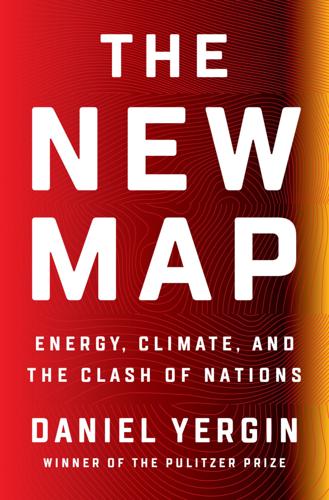
The New Map: Energy, Climate, and the Clash of Nations
by
Daniel Yergin
Published 14 Sep 2020
* * * — The search for “better cab” was not limited to the United States. Cheng Wei, an engineer at the Chinese tech giant Alibaba, missed several flights in China because of his failure to get a taxi in time. Fed up, in 2012 he founded DiDi, which means “beep beep” in Chinese. Now called DiDi Chuxing after a merger, it has become the largest ride-hailing company in the world.4 That need for “better cab” was all too painfully obvious to a banker named Jean Liu when she found herself stranded with three unhappy children on a street corner in Beijing, midst a heavy rain, unable to flag down a taxi.
…
Adam Lashinsky, Wild Ride: Inside Uber’s Quest for World Domination (New York: Portfolio/Penguin, 2017), pp. 80–81, 91. 3. Megan Rose Dickey, “Lyft’s Rides Are So Social,” Business Insider, March 16, 2014; Travis Kalanick, Uber Policy White Paper, “Principled Innovation: Addressing the Regulatory Ambiguity,” April 12, 2013 (“compete”). 4. “Didi Chuxing’s Founder Cheng Wei,” Times of India, August 8, 2016. 5. Interview with Jean Liu. 6. Mike Isaacs, Super Pumped: The Battle for Uber (New York: W. W. Norton, 2019), chapters 27–30; Farhad Manjoo, “Uber’s Lesson,” New York Times, June 21, 2017; Anita Balakrishnan, “Here’s the Full 13-Page Report of Recommendations for Uber,” CNBC, June 13, 2017.
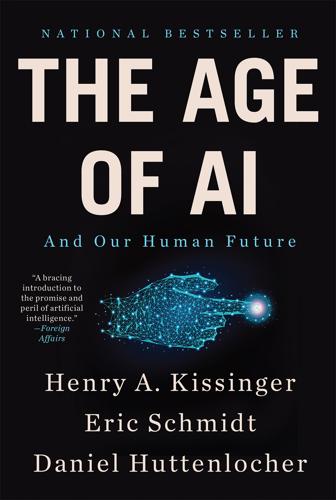
The Age of AI: And Our Human Future
by
Henry A Kissinger
,
Eric Schmidt
and
Daniel Huttenlocher
Published 2 Nov 2021
Thus, although they are operated as commercial entities, some network platforms are becoming geopolitically significant actors by virtue of their scale, function, and influence. Many of the most significant network platforms originated in the United States (Google, Facebook, Uber) or China (Baidu, WeChat, Didi Chuxing). As a result, these network platforms seek to build their user bases and commercial partnerships in regions containing markets that are commercially and strategically significant to Washington and Beijing. Such dynamics introduce novel factors into foreign policy calculations. Commercial competition between network platforms can affect geopolitical competition between governments—sometimes even topping the agenda in diplomacy.
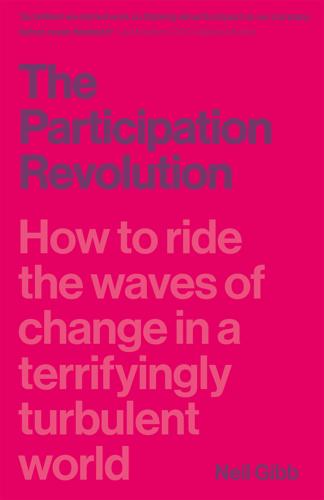
The Participation Revolution: How to Ride the Waves of Change in a Terrifyingly Turbulent World
by
Neil Gibb
Published 15 Feb 2018
It was a beautiful and brilliant metaphor, pointing to the seemingly magical nature of these companies. The magic, though, isn’t something mystical and esoteric. When TechCrunch published a list of the most valuable unicorns in early 2017, the top five were all participatory innovations. Uber (founded 2009, value $62.5 billion), Didi Chuxing (founded 2012, value $50 billion), and Airbnb (founded 2008, value $31 billion) are participatory platforms. Ant Financial (founded 2010, value $60 billion) is a participatory tool, enabling users to participate safely in China’s burgeoning e-commerce markets. Xiaomi (founded 2010, value $45 billion) is a participatory brand, crowd-sourcing users to participate in the design process as a means to make smartphones available at as near the cost of production as possible.
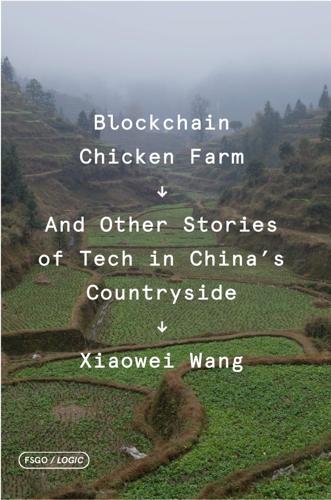
Blockchain Chicken Farm: And Other Stories of Tech in China's Countryside
by
Xiaowei Wang
Published 12 Oct 2020
A lawyer I talk to, who has worked at places like the China Food and Drug Administration, points to very public, visible platform safety incidents that indicate regulation will happen. He gives examples: people getting sick from food purchased off Taobao, rural citizens getting scammed into bankruptcy by peer-to-peer lending platforms, and the Didi Chuxing incident in 2018, where a driver raped and killed a passenger. The public outcry in response to these incidents led swiftly to immediate changes to the platform. The government is happy to intervene, even in an age where it has been more and more open to letting private companies act first, and regulating only later. 8.
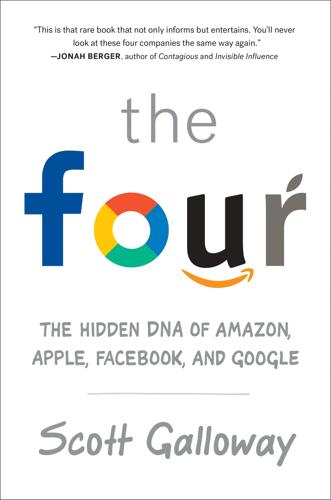
The Four: How Amazon, Apple, Facebook, and Google Divided and Conquered the World
by
Scott Galloway
Published 2 Oct 2017
NYU Stern Professor of Management Sonia Marciano (clearest blue-flame thinker in strategy today) believes the key to establishing advantage is finding points of differentiation where there is large, real or perceived, variance. If you’re a decathlete, the key is to find the event with the greatest variance in performance and own it. Uber is a great product, but I’d challenge you to identify (without knowing which ride-sharing platform you booked through) the difference between Uber, Lyft, Curb, and Didi Chuxing. The category is a 10x improvement over cabs and black cars, but there is an increasing sameness among ride-sharing players. This has likely been the case for a while, but Uber’s CEO frat rock (that is, shit for brains) behavior has prompted people to discover on their own that Lyft is the same thing.

How to Fix the Future: Staying Human in the Digital Age
by
Andrew Keen
Published 1 Mar 2018
China’s dominant mobile-messaging service, WeChat, for example, has so elegantly combined email, free video calls, and instant group chats that equivalent American products such as Facebook Messenger or Apple Messages now appear slightly archaic.16 China’s e-commerce leviathan Alibaba and its successful microblogging website Sina Weibo have also added a selection of original features to make these products more popular in China than Twitter or Amazon. Uber, in fact, failed so dismally in China that it sold its local unit to its biggest indigenous rival, Didi Chuxing. So the problem isn’t about a lack of Chinese innovation. Instead, it lies in the way that this innovation is being manipulated by Chinese politicians and internet policy makers—the local equivalents of Singapore’s Lee Hsien Loong, Jacqueline Poh, and Aaron Maniam. In contrast with the relatively enlightened and trusting digital strategies pursued by officials in Singapore, China’s official internet policy is censorious, punitive, and both untrustworthy and untrusting.

Ghost Road: Beyond the Driverless Car
by
Anthony M. Townsend
Published 15 Jun 2020
Cheape, Moving the Masses: Urban Public Transit in New York, Boston, and Philadelphia 1880–1912 (Cambridge, MA: Harvard University Press, 1980), 1. 175companies merely joined forces: Cheape, Moving the Masses, 172. 175the most powerful, reviled traction monopoly: Walt Crowley, “City Light’s Birth and Seattle’s Early Power Struggles, 1886–1950,” History Link, April 26, 2000, https://www.historylink.org/File/2318. 175enjoyed decades of unrivaled power: Owain James, “We Miss Streetcars’ Frequent and Reliable Service, Not Streetcars Themselves,” Mobility Lab, April 17, 2019, https://mobilitylab.org/2019/04/17/we-miss-streetcars-frequent-and-reliable-service-not-streetcars-themselves/; combination of technological change and federal intervention: “Jersey Trolley Merger,” Wall Street Journal, May 13, 1905, 2. 176$100 billion Vision Fund: Katrina Brooker, “The Most Powerful Person in Silicon Valley,” Fast Company, January 14, 2019, https://www.fastcompany.com/90285552/the-most-powerful-person-in-silicon-valley. 176its total commitment to some $9 billion: Pavel Alpeyev, Jie Ma, and Won Jae Ko, “Taxi-Hailing Apps Take Root in Japan as SoftBank, Didi Join Fray,” Bloomberg, July 19, 2018, https://www.bloomberg.com/news/articles/2018-07-19/softbank-didi-to-roll-out-taxi-hailing-business-in-japan. 177$2 billion into Singapore-based Grab: Yoolim Lee, “Grab Vanquishes Uber with Local Strategy, Billions from SoftBank,” Bloomberg, March 26, 2018, https://www.bloomberg.com/news/articles/2018-03-26/grab-vanquishes-uber-with-local-strategy-billions-from-softbank. 177Ola downloaded $2 billion: Saritha Rai, “India’s Ola Raises $2 Billion from SoftBank, Tencent,” Bloomberg, October 2, 2017, https://www.bloomberg.com/news/articles/2017-10-02/india-s-ola-is-said-to-raise-2-billion-from-softbank-tencent. 17715 percent stake in Uber: Alison Griswold, “SoftBank—not Uber—Is the Real King of Ride-Hailing,” Quartz, January 23, 2018, https://qz.com/1187144/softbank-not-uber-is-the-real-king-of-ride-hailing/. 177Uber picked off Dubai-based Careem: Adam Satariano, “This Estonian Start-Up Has Become a Thorn in Uber’s Side,” New York Times, April 23, 2019, https://www.nytimes.com/2019/04/23/technology/bolt-taxify-uber-lyft.html. 177The damage to consumers: Justina Lee, “Singapore Fine Is ‘Minor Bump’ in Grab’s Ride-Hailing Dominance,” Nikkei Asian Review, September 25, 2018, https://asia.nikkei.com/Spotlight/Sharing-Economy/Singapore-fine-is-minor-bump-in-Grab-s-ride-hailing-dominance. 177Grab cornered more than 80 percent: Ardhana Aravindan, “Singapore Fines Grab and Uber, Imposes Measures to Open Up Market,” Reuters, September 23, 2018, https://www.reuters.com/article/us-uber-grab-singapore/singapore-fines-grab-and-uber-imposes-measures-to-open-up-market-idUSKCN1M406J. 177all launched antitrust investigations: Mai Nguyen, “Vietnam Says Eyeing Formal Antitrust Probe into Uber-Grab Deal,” Reuters, May 16, 2018, https://www.reuters.com/article/us-uber-grab-vietnam-idUSKCN1IH0XNiAikaRey, “Antitrust Watchdog Fines Grab P16 Million over Uber Deal,” Rappler, October 17, 2018, https://www.rappler.com/business/214502-philippine-competition-commission-fines-grab-philippines-over-uber-deal; Yoolim Lee, “Singapore Watchdog Fines Uber, Grab $9.5 Million over Merger,” Bloomberg, September 24, 2018, https://www.bloomberg.com/news/articles/2018-09-24/singapore-fines-uber-grab-s-13-million-for-merger-infringement. 177another fare-slashing battle with Ola: “Steering Group: A Bold Scheme to Dominate Ride-Hailing,” The Economist, May 10, 2018, https://www.economist.com/briefing/2018/05/10/a-bold-scheme-to-dominate-ride-hailing. 177“SoftBank is playing the ride-hailing”: Alison Griswold, “Softbank Has Spread Its Ride-Hailing Bets and Didi Looks Like an Early Win,” Quartz, April 24, 2018, https://qz.com/1261177/softbanks-winner-in-ride-hailing-is-chinas-didi-chuxing-not-uber/. 177“driver incentives, passenger discounts”: Tim O’Reilly, “The Fundamental Problem with Silicon Valley’s Favorite Growth Strategy,” Quartz, February 5, 2019, https://qz.com/1540608/the-problem-with-silicon-valleys-obsession-with-blitzscaling-growth/. 178“locked in a capital-fueled deathmatch”: O’Reilly, “The Fundamental Problem.” 178The Vision Fund’s biggest investor: Brooker, “The Most Powerful Person.” 178the proceeds of an earlier liquidation: Catherine Shu, “Saudi Arabia’s Sovereign Fund Will Also Invest $45B in SoftBank’s Second Vision Fund,” Tech-Crunch, October 2018, https://techcrunch.com/2018/10/07/saudi-arabias-sovereign-fund-will-also-invest-45b-in-softbanks-second-vision-fund/. 178Uber’s multi-billion-dollar quarterly losses: “Aramco Value to Top $2 Trillion, Less Than 5 Percent to Be Sold, Says Prince,” Reuters, April 25, 2016, https://www.reuters.com/article/us-saudi-plan-aramco-idUSKCN0XM16M. 178the House of Saud: Brooker, “The Most Powerful Person.” 178thwart municipal officials’ attempts at enforcement: Mike Isaac, “How Uber Deceives the Authorities Worldwide,” New York Times, March 3, 2017, https://www.nytimes.com/2017/03/03/technology/uber-greyball-program-evade-authorities.html. 179“Even if that means paying money”: Dara Khosrowshahi, “The Campaign for Sustainable Mobility,” Uber, September 26, 2018, https://www.uber.com/newsroom/campaign-sustainable-mobility/. 180Five-cent nickel fares: Cheape, Moving the Masses, 174–75. 180cities . . . grant a ride-hail monopoly: “Free Exchange: The Market for Driverless Cars Will Head towards Monopoly,” The Economist, June 7, 2018, https://www.economist.com/finance-and-economics/2018/06/07/the-market-for-driverless-cars-will-head-towards-monopoly. 180“corrupt and contented”: Cheape, Moving the Masses, 177. 180Jay Gould’s Manhattan Railway Company: Terry Golway, Machine Made: Tammany Hall and the Creation of Modern American Politics (New York: Live-right, 2014), 135. 180took over Puget Sound’s streetcar: Crowley, “City Light’s Birth.” 181Public transit was the competition: United States Securities and Exchange Commission, Registration Statement under the Securities Act of 1933: Uber Technologies, April 11, 2019, 25, https://www.sec.gov/Archives/edgar/data/1543151/000119312519103850/d647752ds1.htm#toc. 181deploy predatory pricing: United States Securities and Exchange Commission, Registration Statement. 182“have been created based on cash flows”: “Asset-Backed Security,” Investo-pedia, accessed December 7, 2018, https://www.investopedia.com/terms/a/asset-backedsecurity.asp. 183Amazon’s body-tracking technology: “The Learning Machine: Amazon’s Empire Rests on its Low-Key Approach to AI,” The Economist, April 11, 2019, https://www.economist.com/business/2019/04/13/amazons-empire-rests-on-its-low-key-approach-to-ai. 8.
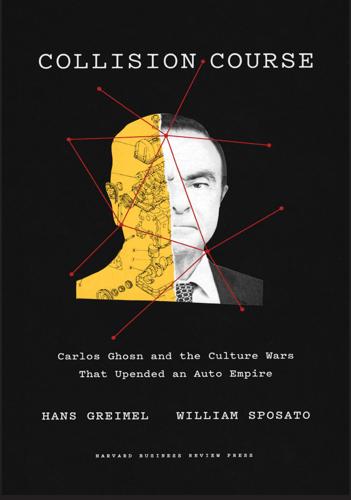
Collision Course: Carlos Ghosn and the Culture Wars That Upended an Auto Empire
by
Hans Gremeil
and
William Sposato
Published 15 Dec 2021
Geely really stunned the industry in 2018, when it secretly amassed a 9.7 percent stake in Germany’s Daimler AG, the parent company of Mercedes-Benz, to become its top shareholder.14 These new global juggernauts threatened to subvert the long-established industrial hierarchy—one in which Renault and Nissan had prime standing. If all this weren’t enough, new modes of mobility, such as the ride-hailing boom ushered in by giants Uber in the United States and Didi Chuxing in China, changed the ways cars were being used. Car sharing threatened to undermine the business model of individual car ownership and transform conventional automakers into rote manufacturers of utilitarian people movers that modern mobility providers, such as Uber, would buy in mass and churn through, with little interest in trivialities like emotional design, handling, or variety.

WTF?: What's the Future and Why It's Up to Us
by
Tim O'Reilly
Published 9 Oct 2017
If we’ve drawn the map correctly, all of its components will show up in other companies that are building twenty-first-century services. A BUSINESS MODEL MAP OF UBER AND LYFT One company at the center of many emerging trends is Uber, a center it shares with Lyft, its biggest competitor in the United States; Didi Chuxing in China; and other on-demand car companies around the world. Matt Cohler, an early Facebook employee turned venture capitalist who became an early investor in Uber, noted that the smartphone is becoming “a remote control for real life.” Uber and Lyft drive home the notion that the Internet is no longer just something that provides access to media content, but instead unlocks real-world services.

The Power Law: Venture Capital and the Making of the New Future
by
Sebastian Mallaby
Published 1 Feb 2022
At the time he published this essay, Gurley’s chief worry with Uber concerned China. Determined to succeed where Amazon, Google, and nearly every other U.S. tech giant had failed, Kalanick had set his heart on cracking the Chinese market. Starting in 2014, he had poured millions into a long-shot contest against the country’s domestic ride-hailing champion, Didi Kuaidi (later Didi Chuxing). This audacious gamble was only possible because Uber could raise hundreds of millions of dollars at a bubbly valuation and because Kalanick’s pliant board was not going to stop him. All Gurley could do was fume. As he told Kalanick repeatedly, pouring capital into China was fundamentally different from pouring capital into the battle against Lyft.